- Search Menu
- Browse content in Arts and Humanities
- Browse content in Archaeology
- Anglo-Saxon and Medieval Archaeology
- Archaeological Methodology and Techniques
- Archaeology by Region
- Archaeology of Religion
- Archaeology of Trade and Exchange
- Biblical Archaeology
- Contemporary and Public Archaeology
- Environmental Archaeology
- Historical Archaeology
- History and Theory of Archaeology
- Industrial Archaeology
- Landscape Archaeology
- Mortuary Archaeology
- Prehistoric Archaeology
- Underwater Archaeology
- Urban Archaeology
- Zooarchaeology
- Browse content in Architecture
- Architectural Structure and Design
- History of Architecture
- Residential and Domestic Buildings
- Theory of Architecture
- Browse content in Art
- Art Subjects and Themes
- History of Art
- Industrial and Commercial Art
- Theory of Art
- Biographical Studies
- Byzantine Studies
- Browse content in Classical Studies
- Classical Literature
- Classical Reception
- Classical History
- Classical Philosophy
- Classical Mythology
- Classical Art and Architecture
- Classical Oratory and Rhetoric
- Greek and Roman Papyrology
- Greek and Roman Archaeology
- Greek and Roman Epigraphy
- Greek and Roman Law
- Late Antiquity
- Religion in the Ancient World
- Digital Humanities
- Browse content in History
- Colonialism and Imperialism
- Diplomatic History
- Environmental History
- Genealogy, Heraldry, Names, and Honours
- Genocide and Ethnic Cleansing
- Historical Geography
- History by Period
- History of Emotions
- History of Agriculture
- History of Education
- History of Gender and Sexuality
- Industrial History
- Intellectual History
- International History
- Labour History
- Legal and Constitutional History
- Local and Family History
- Maritime History
- Military History
- National Liberation and Post-Colonialism
- Oral History
- Political History
- Public History
- Regional and National History
- Revolutions and Rebellions
- Slavery and Abolition of Slavery
- Social and Cultural History
- Theory, Methods, and Historiography
- Urban History
- World History
- Browse content in Language Teaching and Learning
- Language Learning (Specific Skills)
- Language Teaching Theory and Methods
- Browse content in Linguistics
- Applied Linguistics
- Cognitive Linguistics
- Computational Linguistics
- Forensic Linguistics
- Grammar, Syntax and Morphology
- Historical and Diachronic Linguistics
- History of English
- Language Evolution
- Language Reference
- Language Variation
- Language Families
- Language Acquisition
- Lexicography
- Linguistic Anthropology
- Linguistic Theories
- Linguistic Typology
- Phonetics and Phonology
- Psycholinguistics
- Sociolinguistics
- Translation and Interpretation
- Writing Systems
- Browse content in Literature
- Bibliography
- Children's Literature Studies
- Literary Studies (Romanticism)
- Literary Studies (American)
- Literary Studies (Modernism)
- Literary Studies (Asian)
- Literary Studies (European)
- Literary Studies (Eco-criticism)
- Literary Studies - World
- Literary Studies (1500 to 1800)
- Literary Studies (19th Century)
- Literary Studies (20th Century onwards)
- Literary Studies (African American Literature)
- Literary Studies (British and Irish)
- Literary Studies (Early and Medieval)
- Literary Studies (Fiction, Novelists, and Prose Writers)
- Literary Studies (Gender Studies)
- Literary Studies (Graphic Novels)
- Literary Studies (History of the Book)
- Literary Studies (Plays and Playwrights)
- Literary Studies (Poetry and Poets)
- Literary Studies (Postcolonial Literature)
- Literary Studies (Queer Studies)
- Literary Studies (Science Fiction)
- Literary Studies (Travel Literature)
- Literary Studies (War Literature)
- Literary Studies (Women's Writing)
- Literary Theory and Cultural Studies
- Mythology and Folklore
- Shakespeare Studies and Criticism
- Browse content in Media Studies
- Browse content in Music
- Applied Music
- Dance and Music
- Ethics in Music
- Ethnomusicology
- Gender and Sexuality in Music
- Medicine and Music
- Music Cultures
- Music and Media
- Music and Culture
- Music and Religion
- Music Education and Pedagogy
- Music Theory and Analysis
- Musical Scores, Lyrics, and Libretti
- Musical Structures, Styles, and Techniques
- Musicology and Music History
- Performance Practice and Studies
- Race and Ethnicity in Music
- Sound Studies
- Browse content in Performing Arts
- Browse content in Philosophy
- Aesthetics and Philosophy of Art
- Epistemology
- Feminist Philosophy
- History of Western Philosophy
- Metaphysics
- Moral Philosophy
- Non-Western Philosophy
- Philosophy of Language
- Philosophy of Mind
- Philosophy of Perception
- Philosophy of Action
- Philosophy of Law
- Philosophy of Religion
- Philosophy of Science
- Philosophy of Mathematics and Logic
- Practical Ethics
- Social and Political Philosophy
- Browse content in Religion
- Biblical Studies
- Christianity
- East Asian Religions
- History of Religion
- Judaism and Jewish Studies
- Qumran Studies
- Religion and Education
- Religion and Health
- Religion and Politics
- Religion and Science
- Religion and Law
- Religion and Art, Literature, and Music
- Religious Studies
- Browse content in Society and Culture
- Cookery, Food, and Drink
- Cultural Studies
- Customs and Traditions
- Ethical Issues and Debates
- Hobbies, Games, Arts and Crafts
- Lifestyle, Home, and Garden
- Natural world, Country Life, and Pets
- Popular Beliefs and Controversial Knowledge
- Sports and Outdoor Recreation
- Technology and Society
- Travel and Holiday
- Visual Culture
- Browse content in Law
- Arbitration
- Browse content in Company and Commercial Law
- Commercial Law
- Company Law
- Browse content in Comparative Law
- Systems of Law
- Competition Law
- Browse content in Constitutional and Administrative Law
- Government Powers
- Judicial Review
- Local Government Law
- Military and Defence Law
- Parliamentary and Legislative Practice
- Construction Law
- Contract Law
- Browse content in Criminal Law
- Criminal Procedure
- Criminal Evidence Law
- Sentencing and Punishment
- Employment and Labour Law
- Environment and Energy Law
- Browse content in Financial Law
- Banking Law
- Insolvency Law
- History of Law
- Human Rights and Immigration
- Intellectual Property Law
- Browse content in International Law
- Private International Law and Conflict of Laws
- Public International Law
- IT and Communications Law
- Jurisprudence and Philosophy of Law
- Law and Society
- Law and Politics
- Browse content in Legal System and Practice
- Courts and Procedure
- Legal Skills and Practice
- Primary Sources of Law
- Regulation of Legal Profession
- Medical and Healthcare Law
- Browse content in Policing
- Criminal Investigation and Detection
- Police and Security Services
- Police Procedure and Law
- Police Regional Planning
- Browse content in Property Law
- Personal Property Law
- Study and Revision
- Terrorism and National Security Law
- Browse content in Trusts Law
- Wills and Probate or Succession
- Browse content in Medicine and Health
- Browse content in Allied Health Professions
- Arts Therapies
- Clinical Science
- Dietetics and Nutrition
- Occupational Therapy
- Operating Department Practice
- Physiotherapy
- Radiography
- Speech and Language Therapy
- Browse content in Anaesthetics
- General Anaesthesia
- Neuroanaesthesia
- Clinical Neuroscience
- Browse content in Clinical Medicine
- Acute Medicine
- Cardiovascular Medicine
- Clinical Genetics
- Clinical Pharmacology and Therapeutics
- Dermatology
- Endocrinology and Diabetes
- Gastroenterology
- Genito-urinary Medicine
- Geriatric Medicine
- Infectious Diseases
- Medical Toxicology
- Medical Oncology
- Pain Medicine
- Palliative Medicine
- Rehabilitation Medicine
- Respiratory Medicine and Pulmonology
- Rheumatology
- Sleep Medicine
- Sports and Exercise Medicine
- Community Medical Services
- Critical Care
- Emergency Medicine
- Forensic Medicine
- Haematology
- History of Medicine
- Browse content in Medical Skills
- Clinical Skills
- Communication Skills
- Nursing Skills
- Surgical Skills
- Medical Ethics
- Browse content in Medical Dentistry
- Oral and Maxillofacial Surgery
- Paediatric Dentistry
- Restorative Dentistry and Orthodontics
- Surgical Dentistry
- Medical Statistics and Methodology
- Browse content in Neurology
- Clinical Neurophysiology
- Neuropathology
- Nursing Studies
- Browse content in Obstetrics and Gynaecology
- Gynaecology
- Occupational Medicine
- Ophthalmology
- Otolaryngology (ENT)
- Browse content in Paediatrics
- Neonatology
- Browse content in Pathology
- Chemical Pathology
- Clinical Cytogenetics and Molecular Genetics
- Histopathology
- Medical Microbiology and Virology
- Patient Education and Information
- Browse content in Pharmacology
- Psychopharmacology
- Browse content in Popular Health
- Caring for Others
- Complementary and Alternative Medicine
- Self-help and Personal Development
- Browse content in Preclinical Medicine
- Cell Biology
- Molecular Biology and Genetics
- Reproduction, Growth and Development
- Primary Care
- Professional Development in Medicine
- Browse content in Psychiatry
- Addiction Medicine
- Child and Adolescent Psychiatry
- Forensic Psychiatry
- Learning Disabilities
- Old Age Psychiatry
- Psychotherapy
- Browse content in Public Health and Epidemiology
- Epidemiology
- Public Health
- Browse content in Radiology
- Clinical Radiology
- Interventional Radiology
- Nuclear Medicine
- Radiation Oncology
- Reproductive Medicine
- Browse content in Surgery
- Cardiothoracic Surgery
- Gastro-intestinal and Colorectal Surgery
- General Surgery
- Neurosurgery
- Paediatric Surgery
- Peri-operative Care
- Plastic and Reconstructive Surgery
- Surgical Oncology
- Transplant Surgery
- Trauma and Orthopaedic Surgery
- Vascular Surgery
- Browse content in Science and Mathematics
- Browse content in Biological Sciences
- Aquatic Biology
- Biochemistry
- Bioinformatics and Computational Biology
- Developmental Biology
- Ecology and Conservation
- Evolutionary Biology
- Genetics and Genomics
- Microbiology
- Molecular and Cell Biology
- Natural History
- Plant Sciences and Forestry
- Research Methods in Life Sciences
- Structural Biology
- Systems Biology
- Zoology and Animal Sciences
- Browse content in Chemistry
- Analytical Chemistry
- Computational Chemistry
- Crystallography
- Environmental Chemistry
- Industrial Chemistry
- Inorganic Chemistry
- Materials Chemistry
- Medicinal Chemistry
- Mineralogy and Gems
- Organic Chemistry
- Physical Chemistry
- Polymer Chemistry
- Study and Communication Skills in Chemistry
- Theoretical Chemistry
- Browse content in Computer Science
- Artificial Intelligence
- Computer Architecture and Logic Design
- Game Studies
- Human-Computer Interaction
- Mathematical Theory of Computation
- Programming Languages
- Software Engineering
- Systems Analysis and Design
- Virtual Reality
- Browse content in Computing
- Business Applications
- Computer Games
- Computer Security
- Computer Networking and Communications
- Digital Lifestyle
- Graphical and Digital Media Applications
- Operating Systems
- Browse content in Earth Sciences and Geography
- Atmospheric Sciences
- Environmental Geography
- Geology and the Lithosphere
- Maps and Map-making
- Meteorology and Climatology
- Oceanography and Hydrology
- Palaeontology
- Physical Geography and Topography
- Regional Geography
- Soil Science
- Urban Geography
- Browse content in Engineering and Technology
- Agriculture and Farming
- Biological Engineering
- Civil Engineering, Surveying, and Building
- Electronics and Communications Engineering
- Energy Technology
- Engineering (General)
- Environmental Science, Engineering, and Technology
- History of Engineering and Technology
- Mechanical Engineering and Materials
- Technology of Industrial Chemistry
- Transport Technology and Trades
- Browse content in Environmental Science
- Applied Ecology (Environmental Science)
- Conservation of the Environment (Environmental Science)
- Environmental Sustainability
- Environmentalist Thought and Ideology (Environmental Science)
- Management of Land and Natural Resources (Environmental Science)
- Natural Disasters (Environmental Science)
- Nuclear Issues (Environmental Science)
- Pollution and Threats to the Environment (Environmental Science)
- Social Impact of Environmental Issues (Environmental Science)
- History of Science and Technology
- Browse content in Materials Science
- Ceramics and Glasses
- Composite Materials
- Metals, Alloying, and Corrosion
- Nanotechnology
- Browse content in Mathematics
- Applied Mathematics
- Biomathematics and Statistics
- History of Mathematics
- Mathematical Education
- Mathematical Finance
- Mathematical Analysis
- Numerical and Computational Mathematics
- Probability and Statistics
- Pure Mathematics
- Browse content in Neuroscience
- Cognition and Behavioural Neuroscience
- Development of the Nervous System
- Disorders of the Nervous System
- History of Neuroscience
- Invertebrate Neurobiology
- Molecular and Cellular Systems
- Neuroendocrinology and Autonomic Nervous System
- Neuroscientific Techniques
- Sensory and Motor Systems
- Browse content in Physics
- Astronomy and Astrophysics
- Atomic, Molecular, and Optical Physics
- Biological and Medical Physics
- Classical Mechanics
- Computational Physics
- Condensed Matter Physics
- Electromagnetism, Optics, and Acoustics
- History of Physics
- Mathematical and Statistical Physics
- Measurement Science
- Nuclear Physics
- Particles and Fields
- Plasma Physics
- Quantum Physics
- Relativity and Gravitation
- Semiconductor and Mesoscopic Physics
- Browse content in Psychology
- Affective Sciences
- Clinical Psychology
- Cognitive Psychology
- Cognitive Neuroscience
- Criminal and Forensic Psychology
- Developmental Psychology
- Educational Psychology
- Evolutionary Psychology
- Health Psychology
- History and Systems in Psychology
- Music Psychology
- Neuropsychology
- Organizational Psychology
- Psychological Assessment and Testing
- Psychology of Human-Technology Interaction
- Psychology Professional Development and Training
- Research Methods in Psychology
- Social Psychology
- Browse content in Social Sciences
- Browse content in Anthropology
- Anthropology of Religion
- Human Evolution
- Medical Anthropology
- Physical Anthropology
- Regional Anthropology
- Social and Cultural Anthropology
- Theory and Practice of Anthropology
- Browse content in Business and Management
- Business Ethics
- Business History
- Business Strategy
- Business and Technology
- Business and Government
- Business and the Environment
- Comparative Management
- Corporate Governance
- Corporate Social Responsibility
- Entrepreneurship
- Health Management
- Human Resource Management
- Industrial and Employment Relations
- Industry Studies
- Information and Communication Technologies
- International Business
- Knowledge Management
- Management and Management Techniques
- Operations Management
- Organizational Theory and Behaviour
- Pensions and Pension Management
- Public and Nonprofit Management
- Strategic Management
- Supply Chain Management
- Browse content in Criminology and Criminal Justice
- Criminal Justice
- Criminology
- Forms of Crime
- International and Comparative Criminology
- Youth Violence and Juvenile Justice
- Development Studies
- Browse content in Economics
- Agricultural, Environmental, and Natural Resource Economics
- Asian Economics
- Behavioural Finance
- Behavioural Economics and Neuroeconomics
- Econometrics and Mathematical Economics
- Economic History
- Economic Methodology
- Economic Systems
- Economic Development and Growth
- Financial Markets
- Financial Institutions and Services
- General Economics and Teaching
- Health, Education, and Welfare
- History of Economic Thought
- International Economics
- Labour and Demographic Economics
- Law and Economics
- Macroeconomics and Monetary Economics
- Microeconomics
- Public Economics
- Urban, Rural, and Regional Economics
- Welfare Economics
- Browse content in Education
- Adult Education and Continuous Learning
- Care and Counselling of Students
- Early Childhood and Elementary Education
- Educational Equipment and Technology
- Educational Strategies and Policy
- Higher and Further Education
- Organization and Management of Education
- Philosophy and Theory of Education
- Schools Studies
- Secondary Education
- Teaching of a Specific Subject
- Teaching of Specific Groups and Special Educational Needs
- Teaching Skills and Techniques
- Browse content in Environment
- Applied Ecology (Social Science)
- Climate Change
- Conservation of the Environment (Social Science)
- Environmentalist Thought and Ideology (Social Science)
- Natural Disasters (Environment)
- Social Impact of Environmental Issues (Social Science)
- Browse content in Human Geography
- Cultural Geography
- Economic Geography
- Political Geography
- Browse content in Interdisciplinary Studies
- Communication Studies
- Museums, Libraries, and Information Sciences
- Browse content in Politics
- African Politics
- Asian Politics
- Chinese Politics
- Comparative Politics
- Conflict Politics
- Elections and Electoral Studies
- Environmental Politics
- European Union
- Foreign Policy
- Gender and Politics
- Human Rights and Politics
- Indian Politics
- International Relations
- International Organization (Politics)
- International Political Economy
- Irish Politics
- Latin American Politics
- Middle Eastern Politics
- Political Behaviour
- Political Economy
- Political Institutions
- Political Theory
- Political Methodology
- Political Communication
- Political Philosophy
- Political Sociology
- Politics and Law
- Public Policy
- Public Administration
- Quantitative Political Methodology
- Regional Political Studies
- Russian Politics
- Security Studies
- State and Local Government
- UK Politics
- US Politics
- Browse content in Regional and Area Studies
- African Studies
- Asian Studies
- East Asian Studies
- Japanese Studies
- Latin American Studies
- Middle Eastern Studies
- Native American Studies
- Scottish Studies
- Browse content in Research and Information
- Research Methods
- Browse content in Social Work
- Addictions and Substance Misuse
- Adoption and Fostering
- Care of the Elderly
- Child and Adolescent Social Work
- Couple and Family Social Work
- Developmental and Physical Disabilities Social Work
- Direct Practice and Clinical Social Work
- Emergency Services
- Human Behaviour and the Social Environment
- International and Global Issues in Social Work
- Mental and Behavioural Health
- Social Justice and Human Rights
- Social Policy and Advocacy
- Social Work and Crime and Justice
- Social Work Macro Practice
- Social Work Practice Settings
- Social Work Research and Evidence-based Practice
- Welfare and Benefit Systems
- Browse content in Sociology
- Childhood Studies
- Community Development
- Comparative and Historical Sociology
- Economic Sociology
- Gender and Sexuality
- Gerontology and Ageing
- Health, Illness, and Medicine
- Marriage and the Family
- Migration Studies
- Occupations, Professions, and Work
- Organizations
- Population and Demography
- Race and Ethnicity
- Social Theory
- Social Movements and Social Change
- Social Research and Statistics
- Social Stratification, Inequality, and Mobility
- Sociology of Religion
- Sociology of Education
- Sport and Leisure
- Urban and Rural Studies
- Browse content in Warfare and Defence
- Defence Strategy, Planning, and Research
- Land Forces and Warfare
- Military Administration
- Military Life and Institutions
- Naval Forces and Warfare
- Other Warfare and Defence Issues
- Peace Studies and Conflict Resolution
- Weapons and Equipment


The Oxford Handbook of Tourism History
Eric G. E. Zuelow is Professor of History at the University of New England in Biddeford, Maine. He is author of A History of Modern Tourism (2015) and Making Ireland Irish: Tourism and National Identity since the Irish Civil War (2009), editor of Touring Beyond the Nation: A Transnational Approach to European Tourism History (2011), and editor of the Journal of Tourism History.
Kevin J. James is Professor of History at the University of Guelph in Canada, where he holds the Scottish Studies Foundation Chair and serves as Director of the Centre for Scottish Studies. His research programs have explored the history of the hotel visitors' book, hotels in wartime, and the history of country house hotels.
- Cite Icon Cite
- Permissions Icon Permissions
This handbook is currently in development, with individual articles publishing online in advance of print publication. At this time, we cannot add information about unpublished articles in this handbook, however the table of contents will continue to grow as additional articles pass through the review process and are added to the site. Please note that the online publication date for this handbook is the date that the first article in the title was published online. For more information, please read the site FAQs.
Signed in as
Institutional accounts.
- Google Scholar Indexing
- GoogleCrawler [DO NOT DELETE]
Personal account
- Sign in with email/username & password
- Get email alerts
- Save searches
- Purchase content
- Activate your purchase/trial code
Institutional access
- Sign in with a library card Sign in with username/password Recommend to your librarian
- Institutional account management
- Get help with access
Access to content on Oxford Academic is often provided through institutional subscriptions and purchases. If you are a member of an institution with an active account, you may be able to access content in one of the following ways:
IP based access
Typically, access is provided across an institutional network to a range of IP addresses. This authentication occurs automatically, and it is not possible to sign out of an IP authenticated account.
Sign in through your institution
Choose this option to get remote access when outside your institution. Shibboleth/Open Athens technology is used to provide single sign-on between your institution’s website and Oxford Academic.
- Click Sign in through your institution.
- Select your institution from the list provided, which will take you to your institution's website to sign in.
- When on the institution site, please use the credentials provided by your institution. Do not use an Oxford Academic personal account.
- Following successful sign in, you will be returned to Oxford Academic.
If your institution is not listed or you cannot sign in to your institution’s website, please contact your librarian or administrator.
Sign in with a library card
Enter your library card number to sign in. If you cannot sign in, please contact your librarian.
Society Members
Society member access to a journal is achieved in one of the following ways:
Sign in through society site
Many societies offer single sign-on between the society website and Oxford Academic. If you see ‘Sign in through society site’ in the sign in pane within a journal:
- Click Sign in through society site.
- When on the society site, please use the credentials provided by that society. Do not use an Oxford Academic personal account.
If you do not have a society account or have forgotten your username or password, please contact your society.
Sign in using a personal account
Some societies use Oxford Academic personal accounts to provide access to their members. See below.
A personal account can be used to get email alerts, save searches, purchase content, and activate subscriptions.
Some societies use Oxford Academic personal accounts to provide access to their members.
Viewing your signed in accounts
Click the account icon in the top right to:
- View your signed in personal account and access account management features.
- View the institutional accounts that are providing access.
Signed in but can't access content
Oxford Academic is home to a wide variety of products. The institutional subscription may not cover the content that you are trying to access. If you believe you should have access to that content, please contact your librarian.
For librarians and administrators, your personal account also provides access to institutional account management. Here you will find options to view and activate subscriptions, manage institutional settings and access options, access usage statistics, and more.
Our books are available by subscription or purchase to libraries and institutions.
- About Oxford Academic
- Publish journals with us
- University press partners
- What we publish
- New features
- Open access
- Rights and permissions
- Accessibility
- Advertising
- Media enquiries
- Oxford University Press
- Oxford Languages
- University of Oxford
Oxford University Press is a department of the University of Oxford. It furthers the University's objective of excellence in research, scholarship, and education by publishing worldwide
- Copyright © 2024 Oxford University Press
- Cookie settings
- Cookie policy
- Privacy policy
- Legal notice
This Feature Is Available To Subscribers Only
Sign In or Create an Account
This PDF is available to Subscribers Only
For full access to this pdf, sign in to an existing account, or purchase an annual subscription.
How American Tourism Began
American tourism took the scenic route over the course of the twentieth century. A growing middle class and car ownership helped.
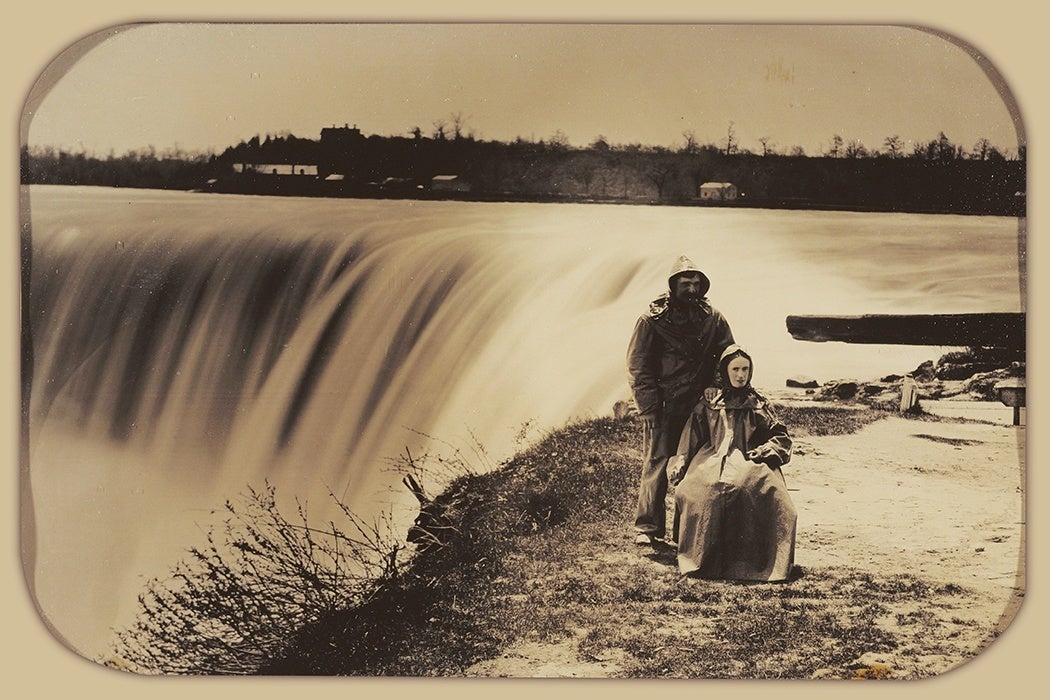
This summer, will you travel to a beach , a national park , or maybe a local campground ? Today, trips like these are often within reach of the average American family. But that’s a relatively new development. In a paper for The Journal of Economic History , Thomas Weiss explains how tourism went from an uncommon pastime for elites to a thoroughly middle-class activity .

Weiss writes that, in general, the first European settlers in America were simply too busy eking out a living to take a vacation. Besides, Puritans and Anglican values discouraged anything even remotely like lying on a beach drinking a margarita. And yet, as early as the 1660s, some Americans were traveling for relaxation, often heading to spas and mineral springs. Among those taking the waters in Virginia a century later was George Washington. Although people claimed the point was to cure an ailment or maintain their health, Weiss writers that spa trips were clearly a “fashionable indulgence.”
In the early nineteenth century, a few scenic destinations became hot spots for tourism, most notably Niagara Falls. In fact, by the 1860s it was so popular that travelers complained that souvenir sellers and aggressive guides had spoiled the place. Still, Weiss estimates that only around 1 percent of the nation’s population visited a spa or other tourist destination in 1860.
Tourism started to become more popular after the Civil War, thanks largely to the development of railroads, though it remained an elite activity. Trains brought travelers to the Jersey Shore and the Florida Coast, and hotels blossomed from Coney Island to San Francisco. Urban Americans headed to the mountains for camping trips, while others explored the restaurants and sights of the major cities. Because transportation was slow and required advance planning, tourists didn’t take quick overnight trips. Vacations meant an extended stay.
That changed in the early twentieth century as cars began populating the landscape. Developers built roadside camps, then cabins and hotels. Small, local attractions popped up everywhere, and major destinations benefited from auto travel. In 1916, around 30,000 visitors traveled to Yellowstone National Park , the majority coming by train. Two decades later, 409,000 people arrived at the park in cars.
By 1930, Weiss writes, more than 5 percent of the population traveled to a well-known tourist attraction each year, and many more clearly stopped at more obscure destinations. The notion of taking vacations had begun to extend into the middle class.
Weekly Digest
Get your fix of JSTOR Daily’s best stories in your inbox each Thursday.
Privacy Policy Contact Us You may unsubscribe at any time by clicking on the provided link on any marketing message.
The basic form of tourism may have been established by World War II, but the scale of the activity changed dramatically in the post-war years. The growth of car ownership, rising middle-class wealth, newly established paid vacation benefits for many workers, and the advent of air travel all contributed to a tourism boom.
And that boom continues today. This year, AAA says a third of Americans will take a family vacation. Of course, that still means two thirds of us won’t. As a recent New York Times story pointed out, many families in the country can’t afford to take time off of work, or to send the kids to a summer camp. To some extent, vacations remain an elite activity.
Read about Ken Ilgunas’s “sort of illegal” hike across the Heartland in “ Backpacking Across ‘Stand Your Ground’ Territory ” on Public Books.
Editor’s note: This page was updated to fix the broken link to “Backpacking Across ‘Stand Your Ground’ Territory.”

JSTOR is a digital library for scholars, researchers, and students. JSTOR Daily readers can access the original research behind our articles for free on JSTOR.
Get Our Newsletter
More stories.

A Bodhisattva for Japanese Women

Asking Scholarly Questions with JSTOR Daily

Confucius in the European Enlightenment

Watching an Eclipse from Prison
Recent posts.
- Exploring the Yardbird Reader
- What Convenience Stores Say About “Urban War Zones”
- Alfalfa: A Crop that Feeds Our Food
- But Why a Penguin?
- When All the English Had Tails
Support JSTOR Daily
Sign up for our weekly newsletter.
History, tourism
- Living reference work entry
- First Online: 01 January 2015
- Cite this living reference work entry

- Auvo Kostiainen 3
164 Accesses
History as a discipline has long traditions going back to the ancient time . Its writing has changed from chronicles and data collection into a multiple and continuously mutating field of studying human experiences throughout diverse times and places. Because of their important role in explaining the contemporary world, historical studies are widely debated among academics and laymen. Even if the discipline appears to address only humans, the natural world often plays an important role in its studies. History not only refers to the past but also to the academic discipline and various other ways of capturing and presenting the past.
What presently is called modern history writing was established during the 1800s. This raises a question about the timing of the publication of the first scholarly studies on the history of tourism or travel . By the late nineteenth century, a number of minor studies had already been published about pilgrimages as well as about travel literature in the West....
This is a preview of subscription content, log in via an institution to check access.
Access this chapter
Institutional subscriptions
Black, J. 1997 The British Abroad: The Grand Tour in the Eighteenth Century. Stroud: Sutton.
Google Scholar
Casson, L. 1994 Travel in the Ancient World. Baltimore: Johns Hopkins University Press.
Dunbar, S. 1915 A History of Travel in America. Indianapolis: Bobbs-Merril.
Henderson, C., and M. Weissgrau 2007 Raj Rhapsodies: Tourism, Heritage and the Seduction of History. Aldershot: Ashgate.
Iggers, G., and Q. Wang 2008 A Global History of Modern Historiography. Harlow: Pearson Longman.
Löfgren, O. 1999 On Holiday: A History of Vacationing. Berkeley: University of California Press.
Book Google Scholar
Kostiainen, A., and T. Syrjämaa, eds. 2008 Touring the Past: Uses of History in Tourism. Discussion and Working Papers No. 6. Savonlinna: Finnish University Network for Tourism Studies.
Towner, J. 1998 What is Tourism’s History? Tourism Management 16:339-343.
Article Google Scholar
Walton, J., ed. 2005 Histories of Tourism: Representation, Identity. Clevedon: Channel View.
Weiler, B., B. Moyle, and C. McLennan 2012 Disciplines that Influence Tourism Doctoral Research: The United States, Canada, Australia, and New Zealand. Annals of Tourism Research 39:1425-1445.
Download references
Author information
Authors and affiliations.
Department of European and World History, University of Turku, 20014, Turku, Finland
Auvo Kostiainen
You can also search for this author in PubMed Google Scholar
Corresponding author
Correspondence to Auvo Kostiainen .
Editor information
Editors and affiliations.
School of Hospitality Leadership, University of Wisconsin-Stout, Menomonie, Wisconsin, USA
Jafar Jafari
School of Hotel and Tourism Management, The Hong Kong Polytechnic University, Hong Kong, Hong Kong SAR
Honggen Xiao
Rights and permissions
Reprints and permissions
Copyright information
© 2014 Springer International Publishing Switzerland
About this entry
Cite this entry.
Kostiainen, A. (2014). History, tourism. In: Jafari, J., Xiao, H. (eds) Encyclopedia of Tourism. Springer, Cham. https://doi.org/10.1007/978-3-319-01669-6_265-1
Download citation
DOI : https://doi.org/10.1007/978-3-319-01669-6_265-1
Received : 09 May 2014
Accepted : 09 May 2014
Published : 12 September 2015
Publisher Name : Springer, Cham
Online ISBN : 978-3-319-01669-6
eBook Packages : Springer Reference Business and Management Reference Module Humanities and Social Sciences Reference Module Business, Economics and Social Sciences
- Publish with us
Policies and ethics
- Find a journal
- Track your research

By Bastian Herre, Veronika Samborska and Max Roser
Tourism has massively increased in recent decades. Aviation has opened up travel from domestic to international. Before the COVID-19 pandemic, the number of international visits had more than doubled since 2000.
Tourism can be important for both the travelers and the people in the countries they visit.
For visitors, traveling can increase their understanding of and appreciation for people in other countries and their cultures.
And in many countries, many people rely on tourism for their income. In some, it is one of the largest industries.
But tourism also has externalities: it contributes to global carbon emissions and can encroach on local environments and cultures.
On this page, you can find data and visualizations on the history and current state of tourism across the world.
Interactive Charts on Tourism
Cite this work.
Our articles and data visualizations rely on work from many different people and organizations. When citing this topic page, please also cite the underlying data sources. This topic page can be cited as:
BibTeX citation
Reuse this work freely
All visualizations, data, and code produced by Our World in Data are completely open access under the Creative Commons BY license . You have the permission to use, distribute, and reproduce these in any medium, provided the source and authors are credited.
The data produced by third parties and made available by Our World in Data is subject to the license terms from the original third-party authors. We will always indicate the original source of the data in our documentation, so you should always check the license of any such third-party data before use and redistribution.
All of our charts can be embedded in any site.
Our World in Data is free and accessible for everyone.
Help us do this work by making a donation.
Academia.edu no longer supports Internet Explorer.
To browse Academia.edu and the wider internet faster and more securely, please take a few seconds to upgrade your browser .
Enter the email address you signed up with and we'll email you a reset link.
- We're Hiring!
- Help Center

History of Travel and Tourism

2017, The SAGE International Encyclopedia of Travel & Tourism
Related Papers
Prof. Konstantinos Andriotis
The view of tourism’s past for Greece is dominated by narratives of early travelers who recorded their experiences punctuated by reference to Greek archaeological treasures, the natural history and the population, and portrayed Greece as a place of difference. Based on these accounts, this study undertakes a typological approach as a crucial element of understanding early Greek travelers’ interests. A typological interpretation of early travel accounts has resulted in six groups of travelers, namely the antiquaries, the collectors, the philhellenists, the artists, the environmentalists, and the professional travelers. These types are compared with modern tourism in an attempt to identify similarities and differences that will help to establish continuity between early and modern traveling. Keywords: early travelers, travel accounts, modern tourists, typology, Greece
Tourism Management
John Towner
Zuccina Bartali
Various academic disciplines have repeatedly sought to re-evaluate the significance of tourism. Globalised tourism's so-cio-economic place within the framework of the leisure and holidaying opportunities on offer today has attracted particular attention. Such accounts often leave out the fact that this also has a history. The present article aims to overcome this shortcoming: it seeks to present an overview of the important structures, processes, types and trends of tourism against the background of historical developments. It deals with early forms of travel in the classical world and the Middle Ages, as well as the precursors of modern tourism, Bildungsreisen ("educational journeys") and the middle-class culture of travel. It then examines the boom in mass tourism in the 19th century and the unique expansion of tourism in the 1960s characterised by new forms of holidaying and experience shaped by globalisation.
Allen Dieterich-Ward
CHAUVET Arnaud
The conventional view of tourism's past is dominated by the history of western cultural experience. Tourism starts with the wealthy, with images of prestigious visits to spas and seaside resorts, Grand Tours and the activities of business entrepreneurs such as Thomas Cook, before it begins to filter down the social ladder. This paper argues that more attention should be paid to tourism's past in non-western societies and cultures and to the more ordinary and routine practices of a wider cross-section of the population. It is too simplistic to portray tourism's evolution as a geographical process of diffusion from one or two core areas and a social process of downward movement from the affluent. Reasons for the prevailing image of tourism's past are suggested and several ideas are proposed for broadening research into its history.
Giants of Tourism
Kevin D O'Gorman
When tourism began, and who the first tourists were, is a question that many have tried to answer, only to end up looking naive when new discoveries have proved their theories wrong. However, it is safe to say that tourism did not start with Thomas Cook, substantial though his contribution might have been (see Chapter 6, this volume). Antiquity is littered with examples of individuals who have made significant, often unintentional, contributions to the industry, some of whom are explored here. Characteristics of travel for curiosity or pleasure can be found from at least 1500 BC. The tombs and temples of the pharaohs began as early as 2700 BC, and by 1500 BC, the Sphinx and the three great pyramids were already over a thousand years old, became early tourist attractions, and consequently suffered from ancient vandalism. Inside one of the pyramids, on one of the walls, a 3500 year old graffiti remains. A message that can be dated back to 1244 BC reads: 'Hadnakhte, scribe of the treasury ... came to make an excursion and amuse himself on the west of Memphis, together with his brother, Panakhd, scribe of the Vizier' (Yoyotte, 1960, p. 57). When reviewing ancient texts it would seem that tourist behaviour has not particularly evolved over the last 3500 years - see something new, experience something different and leave one's mark behind.
Jorge Rodrigues Simao
JORGE R O D R I G U E S SIMAO
The history of tourism traces back to ancient civilizations, with evidence of early travels for leisure and cultural exchange dating back thousands of years. The development of modern tourism can be traced back to the Grand Tour of Europe in the 17th and 18th centuries, where wealthy European nobles would travel for educational and cultural purposes. The Industrial Revolution played a significant role in the growth of mass tourism, as improvements in transportation and increased leisure time allowed for more people to travel for pleasure. The rise of global tourism in the 20th century was fueled by advancements in technology and transportation, making it easier and more affordable for people to travel to far-off destinations. The history of tourism is closely intertwined with economic development, as many countries have relied on the industry as a major source of revenue and job creation. The impact of tourism on local communities and the environment has become a major concern in recent years, as overcrowding and environmental degradation have become significant issues in popular tourist destinations.
Con Antonio
Marco Dorati
Annals of Tourism Research
Gerrit Verhoeven
Foreshadowing Tourism aims to hone or even to upset our understanding of the genesis of tourism. It has long been assumed that nineteenth-century tourism was rooted in the early modern Grand Tour. However, Netherlandish travel diaries, along with some literature from England, Germany, and France, evidence a missing link in this regard. The late seventeenth century witnessed the coming of divertissante somertogjes (pleasurable summer trips) that were in fact poles apart from a classic Grand Tour. By scrutinizing modern features of this novel form of travel (such as its brief and seasonal timing, and the fact that its main motivations were leisure and cultural interests) and more obsolete traits (such as the lack of recurrence or the relatively exclusivity of such touring parties) I seek to restore these speelreysjes (pleasure trips) to their rightful place within the genealogy of travel and tourism. I will also evaluate the potential effects of a transport (r)evolution, cultural development, and a rise in living standards on early modern travel behavior.
RELATED PAPERS
Joseph Moretz
Enfoque UTE
David Claras carrera
Gildardo Rivera
Ecological genetics
S. Kotelevtsev
Cláudio Scapinello
F1000 - Post-publication peer review of the biomedical literature
Cele Abad-Zapatero
Vicente Rocha Soares Ferreira
Equine Veterinary Journal
Stina Ekman
Journal of health disparities research and practice
Mayuramas Sang-ngern
Microbiology
Eamon McGoldrick
Botanical Sciences
GABRIEL Mendez
MUHAMAD ZIDAN ANSHARI
American Journal of Roentgenology
Robert Tien
Biomedicine & pharmacotherapy = Biomedecine & pharmacotherapie
Ademar Alves da Silva Alves da Silva
Interventional neurology
Guilherme Dabus
Medical sains : jurnal ilmiah kefarmasian
Rr Wiwara Awisarita
domenico d'angelo
Burak Fazıl ÇABUK
Včenì zapiski Tavrìjsʹkogo nacìonalʹnogo unìversitetu ìmenì V. Ì. Vernadsʹkogo
Roman Masyk
European Scientific Journal, ESJ
Mohamed Bammou
José Pino-Díaz
Journal of Cataract and Refractive Surgery
Lucia Cortes da Costa
- We're Hiring!
- Help Center
- Find new research papers in:
- Health Sciences
- Earth Sciences
- Cognitive Science
- Mathematics
- Computer Science
- Academia ©2024
- Search Please fill out this field.
- Manage Your Subscription
- Give a Gift Subscription
- Sweepstakes
- Travel Tips
What Travel Looked Like Through the Decades
:max_bytes(150000):strip_icc():format(webp)/maya-kachroo-levine-author-pic-1-2000-1209fcfd315444719a7906644a920183.jpg)
Getting from point A to point B has not always been as easy as online booking, Global Entry , and Uber. It was a surprisingly recent event when the average American traded in the old horse-and-carriage look for a car, plane, or even private jet .
What was it like to travel at the turn of the century? If you were heading out for a trans-Atlantic trip at the very beginning of the 20th century, there was one option: boat. Travelers planning a cross-country trip had something akin to options: carriage, car (for those who could afford one), rail, or electric trolley lines — especially as people moved from rural areas to cities.
At the beginning of the 1900s, leisure travel in general was something experienced exclusively by the wealthy and elite population. In the early-to-mid-20th century, trains were steadily a popular way to get around, as were cars. The debut regional airlines welcomed their first passengers in the 1920s, but the airline business didn't see its boom until several decades later. During the '50s, a huge portion of the American population purchased a set of wheels, giving them the opportunity to hit the open road and live the American dream.
Come 1960, airports had expanded globally to provide both international and domestic flights to passengers. Air travel became a luxury industry, and a transcontinental trip soon became nothing but a short journey.
So, what's next? The leisure travel industry has quite a legacy to fulfill — fancy a trip up to Mars , anyone? Here, we've outlined how travel (and specifically, transportation) has evolved over every decade of the 20th and 21st centuries.
The 1900s was all about that horse-and-carriage travel life. Horse-drawn carriages were the most popular mode of transport, as it was before cars came onto the scene. In fact, roadways were not plentiful in the 1900s, so most travelers would follow the waterways (primarily rivers) to reach their destinations. The 1900s is the last decade before the canals, roads, and railway plans really took hold in the U.S., and as such, it represents a much slower and antiquated form of travel than the traditions we associate with the rest of the 20th century.
Cross-continental travel became more prevalent in the 1910s as ocean liners surged in popularity. In the '10s, sailing via steam ship was the only way to get to Europe. The most famous ocean liner of this decade, of course, was the Titanic. The largest ship in service at the time of its 1912 sailing, the Titanic departed Southampton, England on April 10 (for its maiden voyage) and was due to arrive in New York City on April 17. At 11:40 p.m. on the evening of April 14, it collided with an iceberg and sank beneath the North Atlantic three hours later. Still, when the Titanic was constructed, it was the largest human-made moving object on the planet and the pinnacle of '10s travel.
The roaring '20s really opened our eyes up to the romance and excitement of travel. Railroads in the U.S. were expanded in World War II, and travelers were encouraged to hop on the train to visit out-of-state resorts. It was also a decade of prosperity and economic growth, and the first time middle-class families could afford one of the most crucial travel luxuries: a car. In Europe, luxury trains were having a '20s moment coming off the design glamour of La Belle Epoque, even though high-end train travel dates back to the mid-1800s when George Pullman introduced the concept of private train cars.
Finally, ocean liners bounced back after the challenges of 1912 with such popularity that the Suez Canal had to be expanded. Most notably, travelers would cruise to destinations like Jamaica and the Bahamas.
Cue "Jet Airliner" because we've made it to the '30s, which is when planes showed up on the mainstream travel scene. While the airplane was invented in 1903 by the Wright brothers, and commercial air travel was possible in the '20s, flying was quite a cramped, turbulent experience, and reserved only for the richest members of society. Flying in the 1930s (while still only for elite, business travelers) was slightly more comfortable. Flight cabins got bigger — and seats were plush, sometimes resembling living room furniture.
In 1935, the invention of the Douglas DC-3 changed the game — it was a commercial airliner that was larger, more comfortable, and faster than anything travelers had seen previously. Use of the Douglas DC-3 was picked up by Delta, TWA, American, and United. The '30s was also the first decade that saw trans-Atlantic flights. Pan American Airways led the charge on flying passengers across the Atlantic, beginning commercial flights across the pond in 1939.
1940s & 1950s
Road trip heyday was in full swing in the '40s, as cars got better and better. From convertibles to well-made family station wagons, cars were getting bigger, higher-tech, and more luxurious. Increased comfort in the car allowed for longer road trips, so it was only fitting that the 1950s brought a major expansion in U.S. highway opportunities.
The 1950s brought the Interstate system, introduced by President Eisenhower. Prior to the origination of the "I" routes, road trippers could take only the Lincoln Highway across the country (it ran all the way from NYC to San Francisco). But the Lincoln Highway wasn't exactly a smooth ride — parts of it were unpaved — and that's one of the reasons the Interstate system came to be. President Eisenhower felt great pressure from his constituents to improve the roadways, and he obliged in the '50s, paving the way for smoother road trips and commutes.
The '60s is the Concorde plane era. Enthusiasm for supersonic flight surged in the '60s when France and Britain banded together and announced that they would attempt to make the first supersonic aircraft, which they called Concorde. The Concorde was iconic because of what it represented, forging a path into the future of aviation with supersonic capabilities. France and Britain began building a supersonic jetliner in 1962, it was presented to the public in 1967, and it took its maiden voyage in 1969. However, because of noise complaints from the public, enthusiasm for the Concorde was quickly curbed. Only 20 were made, and only 14 were used for commercial airline purposes on Air France and British Airways. While they were retired in 2003, there is still fervent interest in supersonic jets nearly 20 years later.
Amtrak incorporated in 1971 and much of this decade was spent solidifying its brand and its place within American travel. Amtrak initially serviced 43 states (and Washington D.C.) with 21 routes. In the early '70s, Amtrak established railway stations and expanded to Canada. The Amtrak was meant to dissuade car usage, especially when commuting. But it wasn't until 1975, when Amtrak introduced a fleet of Pullman-Standard Company Superliner cars, that it was regarded as a long-distance travel option. The 235 new cars — which cost $313 million — featured overnight cabins, and dining and lounge cars.
The '80s are when long-distance travel via flight unequivocally became the norm. While the '60s and '70s saw the friendly skies become mainstream, to a certain extent, there was still a portion of the population that saw it as a risk or a luxury to be a high-flyer. Jetsetting became commonplace later than you might think, but by the '80s, it was the long-haul go-to mode of transportation.
1990s & 2000s
Plans for getting hybrid vehicles on the road began to take shape in the '90s. The Toyota Prius (a gas-electric hybrid) was introduced to the streets of Japan in 1997 and took hold outside Japan in 2001. Toyota had sold 1 million Priuses around the world by 2007. The hybrid trend that we saw from '97 to '07 paved the way for the success of Teslas, chargeable BMWs, and the electric car adoption we've now seen around the world. It's been impactful not only for the road trippers but for the average American commuter.
If we're still cueing songs up here, let's go ahead and throw on "Lifestyles of the Rich and Famous," because the 2010s are when air travel became positively over-the-top. Qatar Airways rolled out their lavish Qsuites in 2017. Business class-only airlines like La Compagnie (founded in 2013) showed up on the scene. The '10s taught the luxury traveler that private jets weren't the only way to fly in exceptional style.
Of course, we can't really say what the 2020 transportation fixation will be — but the stage has certainly been set for this to be the decade of commercial space travel. With Elon Musk building an elaborate SpaceX rocket ship and making big plans to venture to Mars, and of course, the world's first space hotel set to open in 2027 , it certainly seems like commercialized space travel is where we're headed next.
:max_bytes(150000):strip_icc():format(webp)/Ellie-Nan-Storck-00d7064c4ef24a22a8900f0416c31833.jpeg)

Art & Culture Travel Blog
History of travelling: how people started to travel.
- Tea Gudek Šnajdar
- Cultural Tourism

Although we often have a feeling like people are travelling for the last few decades only, the truth is – people are travelling for centuries. Old Romans were travelling to relax in their Mediterranean villas. At the same time, people in Eastern Asia wandered for cultural experiences. I’ve got so fascinated with the history of travelling, that I did my own little research on how people started to travel. And here is what I’ve learned.
History of travelling
I was always curious about the reason people started to travel. Was it for pure leisure? To relax? Or to learn about new cultures, and find themselves along the way?
I wanted to chaise the reason all the way to its source – to the first travellers. And hopped to find out what was the initial motivation for people to travel.
According to linguists, the word ‘travel’ was first used in the 14th century. However, people started to travel much earlier.
While looking at the history of travelling and the reasons people started to travel, I wanted to distinguish the difference between travellers and explorers. Most of the time, when thinking about travel in history, people like Marco Polo or Christopher Columbus are coming to mind. However, they weren’t really travellers in a modern sense. They were explorers and researchers. So, to really learn about how people started to travel, I wanted to focus on ordinary people. Travellers like you and me, if you wish.
Romans and their roads
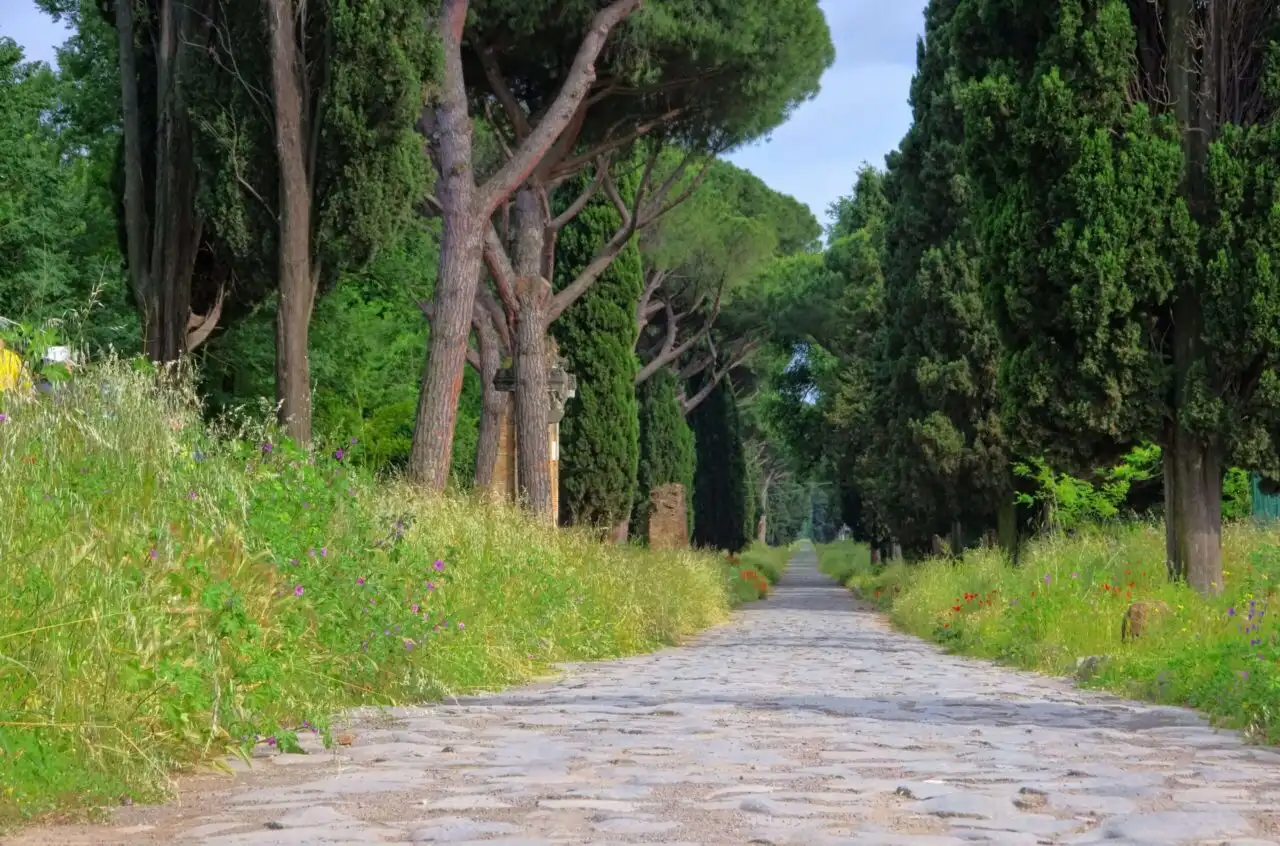
First people who started to travel for enjoyment only were, I’m sure you won’t be surprised, old Romans. Wealthy Romans would often go to their summer villas. And it was purely for leisure. They could, of course, start doing that because they invented something quite crucial for travelling – roads. Well developed network of roads was the reason they could travel safely and quickly.
However, there is another reason that motivated people in Antiquity to travel. And I was quite amazed when I learned about it.
It was a desire to learn. They believed travelling is an excellent way to learn about other cultures, by observing their art, architecture and listening to their languages.
Sounds familiar? It seems like Romans were the first culture tourists.
⤷ Read more : 20 Archaeological sites you have to visit in Europe
Travelling during the Middle Ages
It may come by surprise, but people started to wander more during the Middle Ages. And most of those journeys were pilgrimages.
Religion was the centre of life back in the Middle Ages. And the only things that connected this world with the saints people were worshipping, were the relics of saints. Pilgrims would often travel to another part of the country, or even Europe to visit some of the sacred places.
The most popular destinations for all those pilgrims was Santiago de Compostela, located in northwest Spain. People would travel for thousands of kilometres to reach it. To make a journey a bit easier for them, and to earn money from the newly developed tourism, many guest houses opened along the way. Pilgrims would often visit different towns and churches on their way, and while earning a ticket to heaven, do some sightseeing, as well.
Wealthy people were travelling in the caravans or by using the waterways. What’s changing in the Middle Ages was that travel wasn’t reserved only for the rich anymore. Lower classes are starting to travel, as well. They were travelling on foot, sleeping next to the roads or at some affordable accommodations. And were motivated by religious purposes.
⤷ TIP : You can still find many of those old pilgrim’s routes in Europe. When in old parts of the cities (especially in Belgium and the Netherlands ), look for the scallop shells on the roads. They will lead you to the local Saint-Jacob’s churches. Places dedicated to that saint were always linked to pilgrims and served as stops on their long journeys. In some cities, like in Antwerp , you can follow the scallop shell trails even today.
Below you can see one of the scallop shells on a street and Saint-Jacques Church in Tournai , Belgium.

Grand Tours of the 17th century
More impoverished people continued to travel for religious reasons during the following centuries. However, a new way of travelling appeared among wealthy people in Europe.
Grand tours are becoming quite fashionable among the young aristocrats at the beginning of the 17th century. As a part of their education (hmmm… culture tourists, again?) they would go on a long journey during which they were visiting famous European cities. Such as London , Paris , Rome or Venice, and were learning about their art, history and architecture.
Later on, those grand tours became more structured, and they were following precisely the same route. Often, young students would be accompanied by an educational tutor. And just to make the things easier for them, they were allowed to have their servants with them, too.
One of those young aristocrats was a young emperor, Peter the Great of Russia. He travelled around western Europe and has spent a significant amount of his time in the Netherlands. The architecture of Amsterdam and other Dutch cities definitely inspired a layout of the new city he has built – Saint Petersburg . So, travelling definitely remains an essential part of education since Roman times.
⤷ Read more : 15 Best museums in Europe you have to visit this year
The railway system and beginning of modern travel in the 19th century

Before the railway system was invented, people mostly travelled on foot (budget travel) or by water (the first-class travel at that time). However, when in the 1840s, an extensive network of railways was built, people started to travel for fun.
Mid-19th century definitely marks a real beginning of modern tourism. It’s the time when the middle class started to grow. And they have found a way to travel easily around Europe.
It’s coming by no surprise that the first travel agency, founded by Thomas Cook in England, was established at that time, too. He was using recently developed trains together with a network of hotels to organise his first group trips.
⤷ Read more : The most interesting European myths and legends
History of travelling in the 20th century
Since then, things started to move quickly. With the development of transportation, travelling became much more accessible. Dutch ships would need around a year to travel from Amsterdam to Indonesia. Today, for the same trip, we need less than a day on a plane.
After the Second World War, with the rise of air travel, people started to travel more and more. And with the internet and all the cool apps we have on our smartphones, it’s easier than ever to move and navigate your way in a new country. Mass tourism developed in the 1960s. But, with the new millennium, we started to face the over-tourism.
We can be anywhere in the world in less than two days. And although it’s a great privilege of our time, it also bears some responsibilities. However, maybe the key is to learn from history again and do what old Romans did so well. Travel to learn, explore local history and art, and be true culture tourists.
History of Travelling , How people started to travel , Travel
Join Us On YouTube!
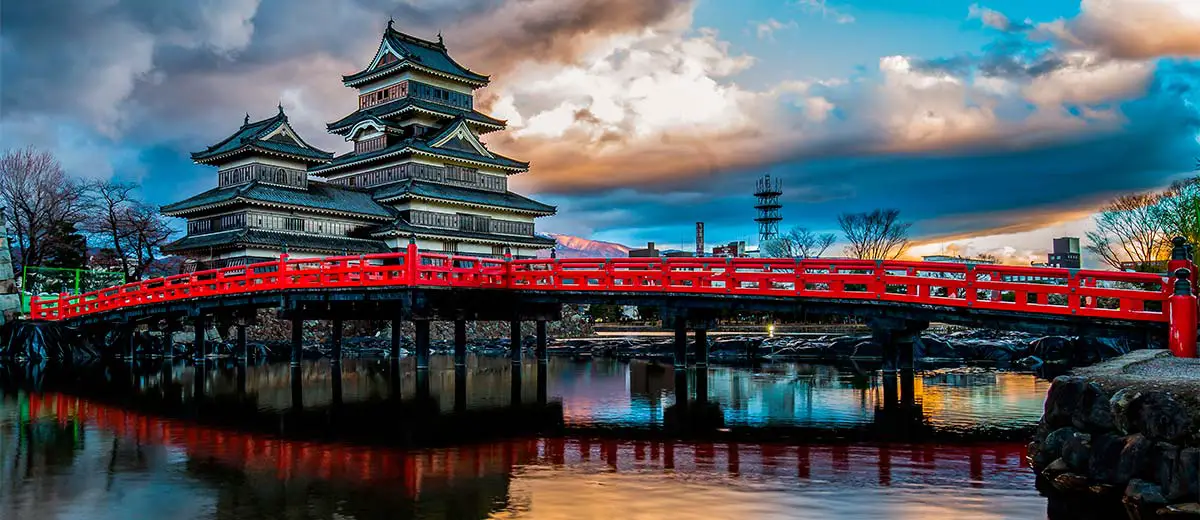
Matsumoto Castle, Nagano, Japan
A Brief History of Travel and Tourism
Utilizing the widest definition of the word, human beings have been travelling since the dawn of time. No matter one’s beliefs about the creation of humans, everyone can agree our species began in some single locale, likely Africa or the Middle East , and ‘travelled’ outwards, settling new lands. However, most of this ‘travel’ was done out of necessity and war, often without the intent of return. It wouldn’t be until Antiquity, or the glory days of the Greek and Roman empires, that tourism, or leisure travel, would be introduced.
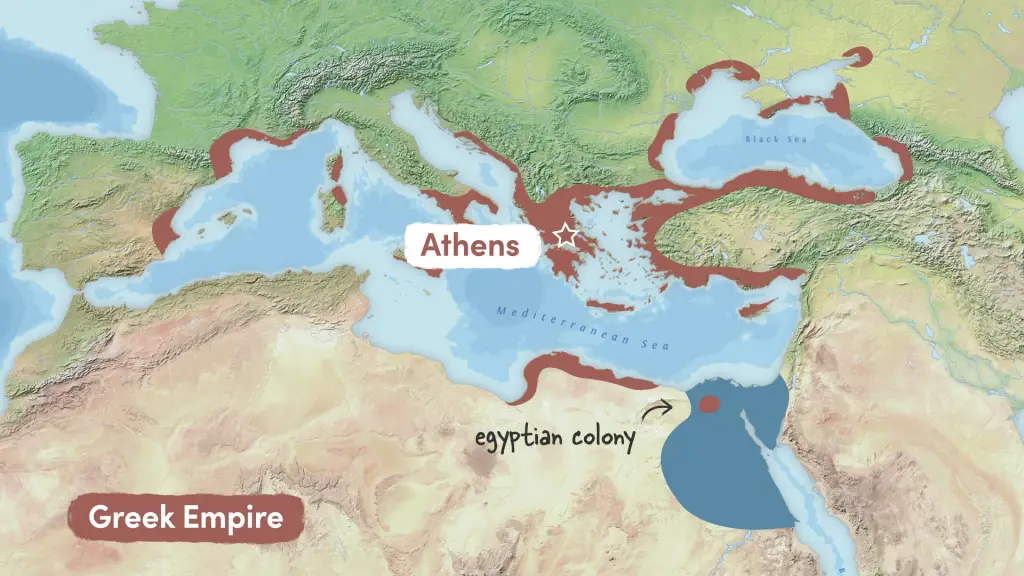
Aristocratic Tourism
In those days, tourism was a privilege almost entirely confined to the wealthy, who travelled largely for cultural exploration. One has to remember, the Greek and Roman upper classes were people who prided themselves on artistic, scientific, and philosophical pursuits. It follows, then, that these early travellers largely sought to learn the arts, languages, and cultures of their destinations.

Soon enough, travelling for leisure’s sake began to gain popularity; from the Roman Empire arises some of the earliest examples of travel resorts and spas in the world. Though they documented their experiences most thoroughly, the elite Europeans were not the only ones travelling in ancient times. In eastern Asia , it was popular for nobles to travel across the countryside for the religious and cultural experience it offered, oftentimes stopping at temples and sacred sites during their travels.
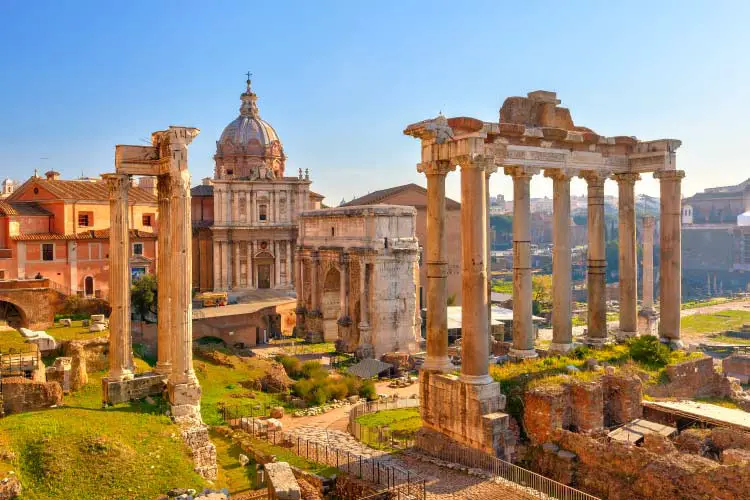
Religious Tourism
During the Middle Ages, travel took on a new meaning. Although leisurely travel was still reserved for the upper class, it became more and more common for members of the upper and even lower classes to embark on pilgrimages. Most of the major religions at the time, including the Islamic, Judaic, and Christian traditions, encouraged their practitioners to conduct pilgrimages.
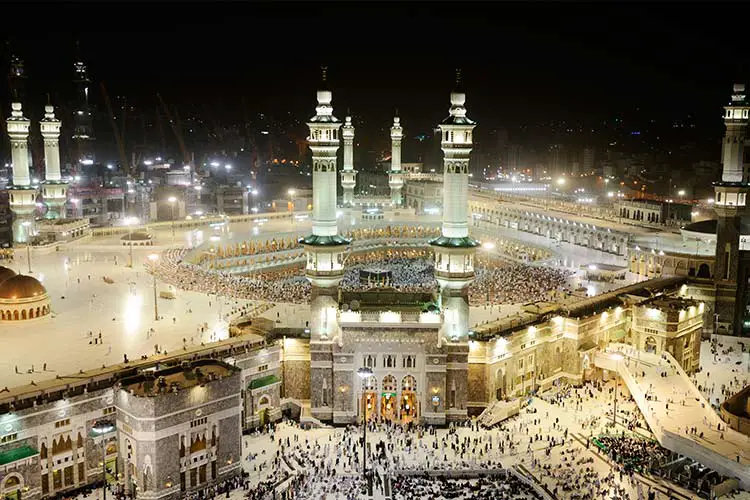
Largely unaided by technology, most of these journeys were done on foot, often occasionally with a beast of burden to carry supplies. The wealthy were able to afford other forms of travel including horseback and ship. Furthermore, the Middle Ages saw the emergence of connected shipping routes. As ports grew, travel opportunities increased, and the dock was typically the start of any long-distance travel during the Middle Ages.
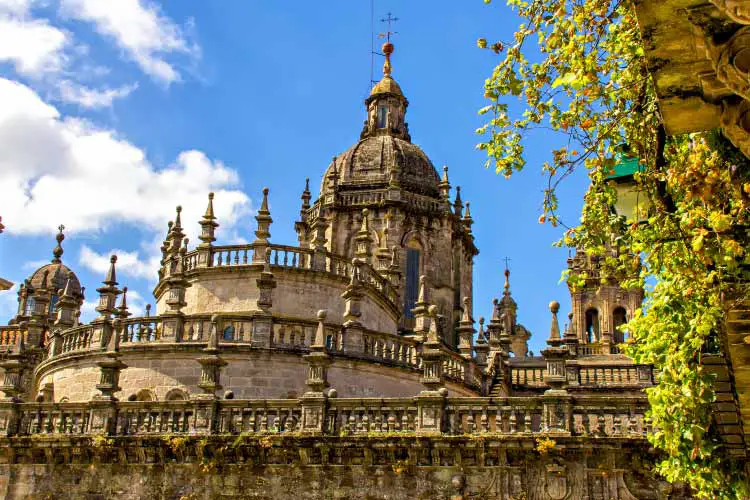
The Grand Tour
Travel continued to exist in this way for some time: the rich travelled primarily for cultural and leisure reasons, while the poor travelled largely for religious reasons, if at all. The next major development travel underwent was the establishment of the Grand Tour. Undertaken by the elite men of Western and Northern European countries , the Grand Tour took young travellers across Europe in a “rite of passage” meant to educate the wealthy after they finished their education but before adulthood. Historians cite this tradition as the origin of the modern tourism industry and indicate that the tradition had become well established in European culture by the 1660s.
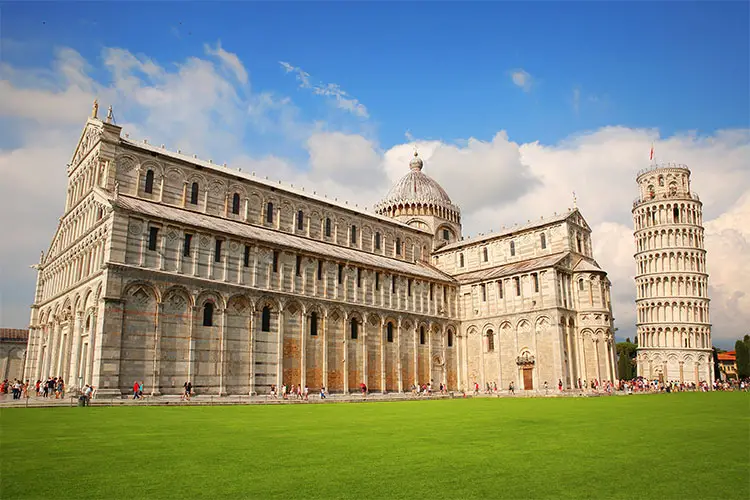
Like many traditions, the Grand Tour eventually developed a rigid structure. Tourists were expected to follow a set itinerary and travelled with a tutor. The Grand Tour typically began in England, moved south through France into Switzerland and Italy. After spending a few months in Italy, the traveller and his tutor moved upwards through Germany and into Holland before returning to England. These trips utilized the most advanced travel technology of the day, including ships and collapsable coaches, and it wasn’t entirely uncommon for the traveller and tutor to be waited on by a handful of servants.
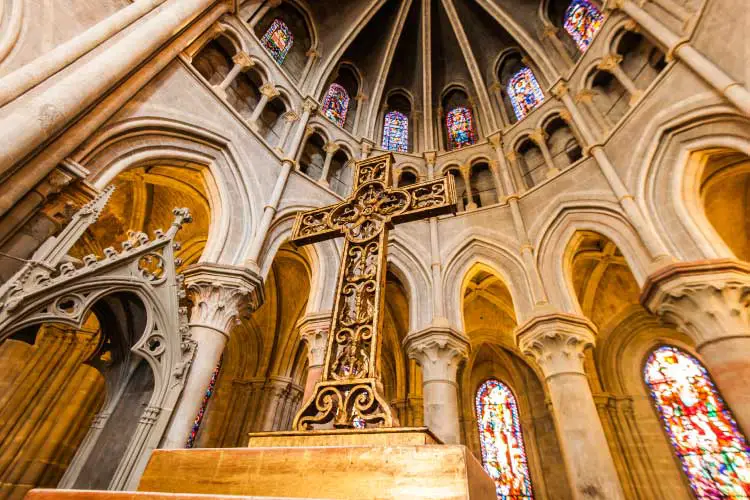
Tourism For The Masses
The Grand Tour remained a popular cultural phenomenon amongst the rich until the 1840s, which saw the advent of the first widespread railway system across system Europe. Immediately, this innovation opened the possibility of embarking on a Grand Tour to the middle classes, and soon it became more popular for middle and even working-class citizens to travel for leisure.
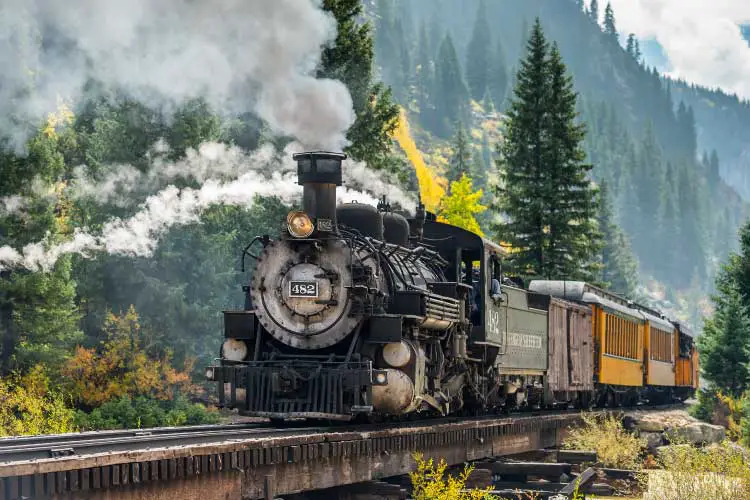
More importantly, the implementation of railway systems across Europe and the United States positioned the world for the Industrial Revolution. The United Kingdom is often cited as the first country to actively promote leisure time to its industrial class, and as a result, the country had a strong impact on the early development of the tourism industry. One hugely influential player in the history of travel and tourism was Englishmen Thomas Cook, who established the first-ever travel agency to provide ‘inclusive individual travel’ in the 1840s.
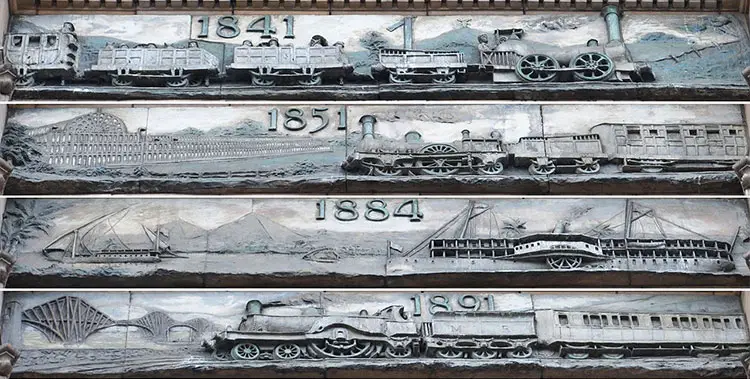
This means that travellers move independently in their travels, but all the food, lodging, and travel expenses were set at a fixed price for a predetermined length of time. This allowed travellers to take any route they fancied throughout Europe without having to ascertain food or lodging ahead of time. This fact, coupled with the falling ticket prices of railways, meant that long-distance travel was dramatically cheaper and faster than ever before. This not only further lowered the barriers to leisure travel but also drastically increased the incidences of business-related travel. As one can imagine, Cook’s Tours became massively popular, and the company remains successful today as the Thomas Cook Group.
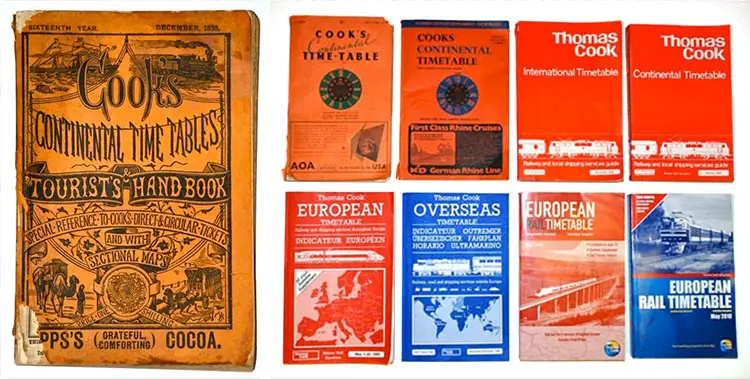
In short, the introduction of a widespread railway system gifted a massive boost to the tourism industry; this boon would largely reflect that the aeroplane would have in the early-20th century. More so than any other technological development, the aeroplane opened the floodgates of mass international tourism. Behemoth multinational airlines such as Pan Am, Delta, and American Airlines arose during the 1900s, and suddenly the physical boundaries between cities were rendered useless. It has become possible for a traveller to get nearly anywhere on the globe in less than 48 hours, for a price that most middle and working-class members can achieve.
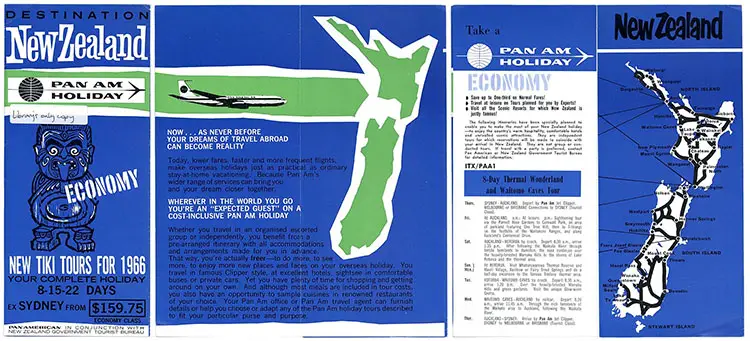
Today, travel stands as one of the most economically important leisure activities in the world. The tourism market is so large that it has split into an astounding number of niche markets, including ecotourism , backpacking, and historical tourism. As of the writing of this article, there have even been a handful of trips into orbit around Earth branded as “space tourism”, a new and exciting chapter in the history of travel and tourism. The story of tourism displays a remarkable connection to the technology that makes travel possible. Transportation innovations like the train and aeroplane have eliminated the difficulties and lowered the costs of long-distance travel, and planet Earth has truly become a smaller place because of it.
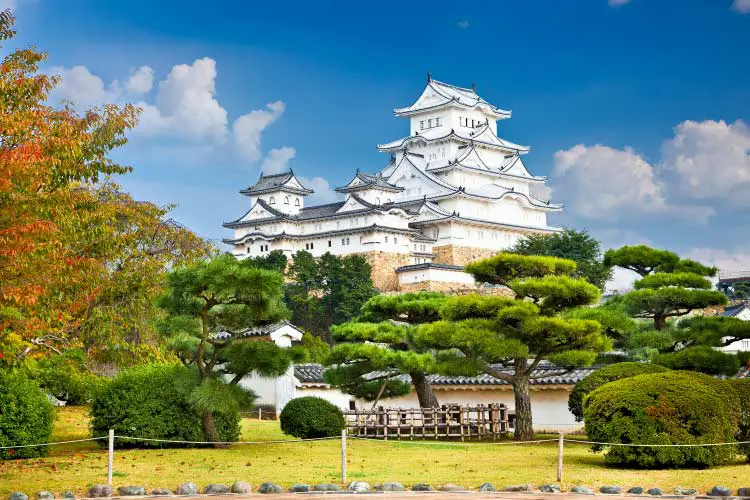
© Textbook Travel 2024 ⋅ View Privacy Policy
How and When Did Tourism Start?
Most of us love to travel and when we think about travelling, what we probably have in mind are the best two or three weeks of the year. Tourism has become a major industry and it creates around 100 million jobs worldwide.
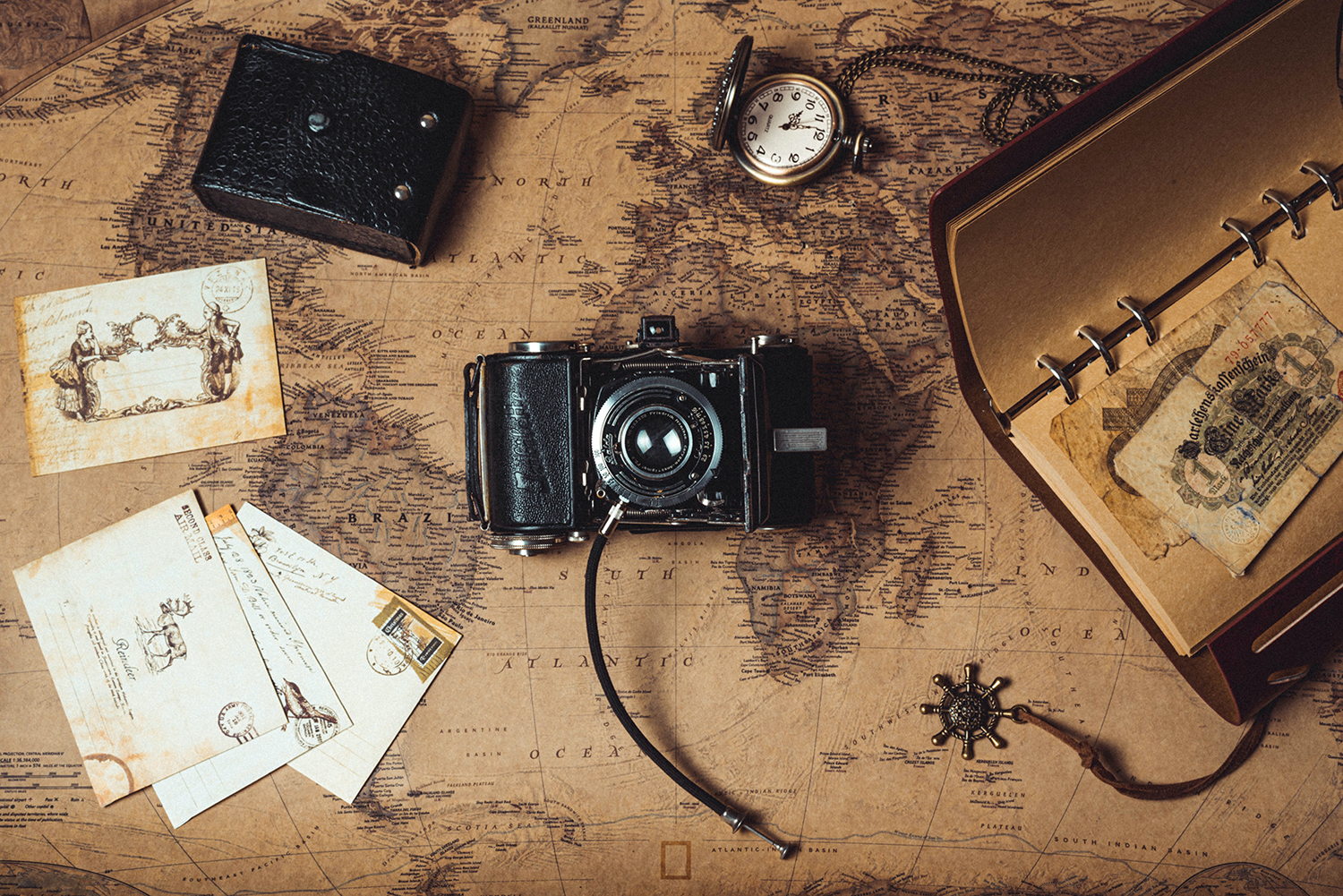
Achim Riemann
In 1854, the first travel agency opened. In 1869, one of the first group tours was launched. It included attendance at the opening of the Suez Canal in Egypt.
But how did it all start?
A long time ago, people initially moved around for practical reasons, such as looking for food or water, or fleeing natural disasters or enemies. But as early as ancient Egypt and in the other “high” cultures found throughout the continents at the time, people started to travel for religious reasons. They set out on pilgrimages, for example to Mecca, or on journeys to take a ritual bath in the Ganges River. That was the beginning of tourism.
What about modern tourism?
Modern tourism can be traced back to the so-called “Grand Tour”, which was an educational journey across Europe. One of the first who embarked on this journey was the King of Poland and Grand Duke of Lithuania, Wladyslaw IV Vasa, also known as Wladislaus Sigismundus, Prince of Poland and Sweden. And yes, the grand tour was just for the super-rich. In 1624, Wladyslaw travelled to Germany, Belgium, the Netherlands, France, Switzerland, Italy, Austria and the Czech Republic. (1)
Poor or even normal people had neither the money nor the time to go on a holiday. However, that started to change at the end of the 19th century. Around 1880, employees in Europe and North America were granted their first work-free days besides Sundays and the mostly Christian holidays, such as Easter or Christmas. These extra work-free days were usually unpaid in the beginning. Since most people couldn’t spare the money for travel, this led to excursions into the surroundings rather than travelling.

The founders of international “tourism” in Europe were the British
Thomas Cook is considered the founder of what is known as organized “package” holidays. In the last decades of the 19th century, the upper social classes in England were so wealthy due to the income from the British Empire that they were the first to be able to afford trips to far-flung areas. (1)
In 1854, the first travel agency opened. In 1869, one of the first group tours was launched. It included attendance at the opening of the Suez Canal in Egypt. From 1889, people took holiday cruises on steamships with musical performances. Seaside holidays became really popular around 1900 (and continue to be popular to this today). From the 1970s onwards, many in the industrialised countries could finally afford a holiday trip. The first criticism over this arose at the beginning of the 1970s: due to tourism, there were as many tourists in Spain in 1973 as there were inhabitants. (2)
In 2019, before the coronavirus pandemic, 1.5 billion tourist arrivals were recorded around the world, a 4% increase compared to 2018's figures. The most visited countries in 2019 were France with 89 million tourists, followed by Spain with 83 million tourists and the United States with 80 million tourists. China and Italy sit at fourth and fifth places, respectively, with 63 million tourists in China and 62 million tourists in Italy. (3)
And what are the most visited tourist attractions worldwide? According to a recent research from TripAdvisor, these are the top five: the Colosseum (Italy), the Louvre (France), the Vatican, the Statue of Liberty (USA), the Eiffel Tower (France) (4).
- Wikipedia: https://de.wikipedia.org/wiki/Tourismus , 12.03.2022
- Wikipedia: https://de.wikipedia.org/wiki/Massentourismus , 12.03.2022
- TravelBook: https://www.travelbook.de/ziele/laender/die-meistbereisten-laender-der-welt
- Travel Wanderlust: https://www.travelwanderlust.co/articles/most-visited-tourist-attractions-in-the-world/ 12.03.2022
Subscribe to newsletter

Tourism Through the Ages: The Human Desire to Explore
- Read Later
Although taking a summer vacation is now a standard aspect of modern-day civilization for many, it wasn’t always that way. Tourism was far less common in ancient times than it is today, but that certainly doesn’t mean it didn’t occur at all. Even in ancient times, people had a natural curiosity about the world around them and yearned to explore.
However, tourism didn’t necessarily look the same then as it does now. So what did tourism look like, and where did ancient peoples like to travel the most? What was the perception of tourists in ancient times versus today?
What was Ancient Tourism Like?
Tourism as we think of it has not always existed. In fact, travel was not possible for most people in ancient times. Travel was often difficult and full of dangers such as disease , starvation, dehydration, or death by wild animals. Because of this, travel was often seen as too risky unless absolutely necessary, such as for relocation, or religious, political, or medical purposes.
However, travel did still happen. Armies would travel to take over new lands or conquer new cities. Tradesmen would travel to popular trade spots throughout their countries to sell goods for profits, while others would travel there to buy utilitarian or luxury items for their homes. Others would travel for important religious ceremonies that they were required to attend. Travel of this nature was considered a need within society, rather than a want, so not tourism as such.
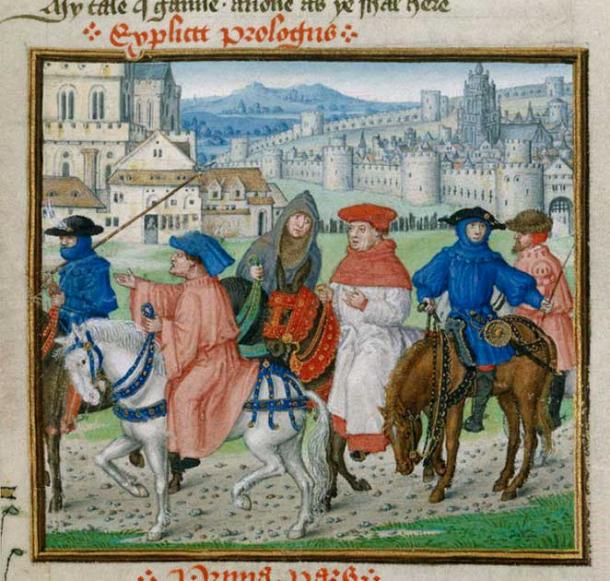
Lydgate and Pilgrims to Canterbury. Early ‘tourism’ was frequently for religious ceremonies and pilgrimages. (Jim Forest / CC BY NC ND 2.0 )
As time went on, technology advanced. With the expansion of roads and the development of more efficient travel using boats , chariots , and carriages, travel for leisure, or tourism, became an intriguing possibility. However, many individuals struggled with the same tourism questions we do today: if they could even afford to travel, and if they could, where they would go.
Early tourists tended to avoid cities with political or civil unrest as it could be dangerous in the event of an uprising. It’s unsurprising these would be eliminated as tourism destinations . They would also avoid cities their own regions had hostility towards, as that was also considered risky business. They would instead choose regions that were not known to be dangerous, just to see what was out there.
Although technological advancements made travel easier than walking or horseback, it was still perilous and time-consuming. Travelers would often bring small weapons for protection, along with any money they planned to spend. Travel would take from a few days to a few weeks (or even a few months!), depending on how far they planned to venture out. This also meant having to take preserved food with them to last the journey, or knowing where to stop along the way to find food when hungry. There were few to no establish tourism ‘rest stops’ in ancient times.
- Colosseum Will Have a Floor For The First Time in 1500 Years!
- Ancient Journeys: What was Travel Like for the Romans?
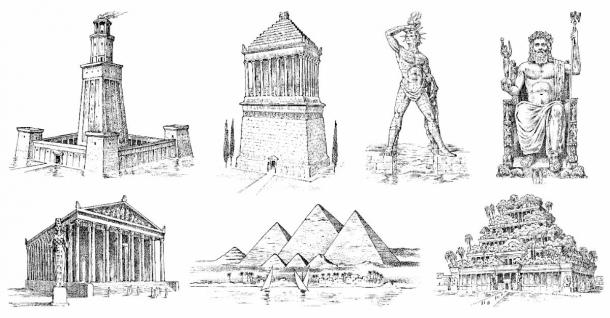
The Seven Wonders of the Ancient World ( artbalitskiy / Adobe Stock)
Tourism Destinations of the Ancient World
There were many tourism destinations available in ancient times, but some were more popular than others. Particularly, ancient tourists enjoyed tourism spots that served multiple purposes. This started as early as the times of the ancient Egyptians , who often traveled for government activities but would stay in foreign areas longer than necessary to enjoy the local shops, restaurants, games, and other forms of entertainment.
This desire to stay abroad for entertainment continued with the Roman Empire. The Romans developed a system of roads that covered approximately 50,000 miles, in order to make travel easier. At the time, traveling 30 miles would take about a day, and they used that information to establish an inn system. Through this system, an inn would be placed approximately every 30 miles, so that you always knew you had a place to rest in the evenings as you traveled out.
With more tourism establishments like inns along the roads , travel felt safer as well. There would be more people present in case of an emergency, and a lower chance of running out of food or water. The risk of natural predators would be lower as well, since travel would no longer take place through endless plains or overgrown wilderness. The Roman system became so well-established that people from surrounding areas would visit Rome, just to see the roads, inns, and other established infrastructure.
Language and currency were an important part of tourism at this time as well. If your destination used a different currency or spoke a different language, you would likely be a bit reserved about spending much time there (if any time at all!). As a result, common tourism areas did business in several common languages, so they could be more inclusive of visitors and receive more tourism.
Tourism in the Middle Ages: Risky Business
After the fall of the Roman Empire , tourism was not the same. In fact, tourism hardly happened at all anymore because there was too much risk involved. Nations were at war with one another, and traveling to a new place meant inevitable danger for the traveler and their family. Lots of the efficient transportation infrastructure were now destroyed, and languages were more separated than ever.
Travel returned to being a necessity rather than a vacation. Religious and political motives were the primary causes of any travel, as nations attempted to overtake one another. Trade routes had to be re-established, although many were still unwilling to risk the trek. It wasn’t until Marco Polo took the risk and began to write about his solo tourism in the 13th century that people began taking interest in exploration again.
By the Renaissance , trade began to take hold once more, and so merchants were willing to travel further than before. Additional trade and tourism businesses opened, and commercialism steadily increased, especially in Europe. People that would visit these trading posts to purchase new and luxury goods would wonder what the rest of the world was like, especially the sources of their favorite goods. This then ushered in the Grand Tour Era.
- Why Did Ancient People Travel Thousands of Kilometers for Incense?
- The Surprising and Iconic Bronze Age Egtved Girl: Teenage Remains Tell a Story of Trade and Travel
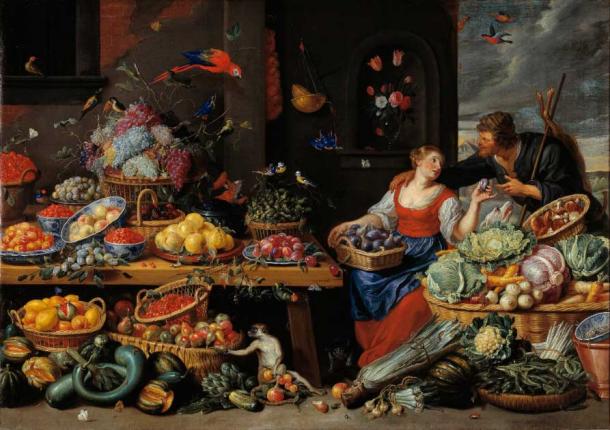
Exotic new products entering Renaissance markets fed a desire for tourism, Jan van Kessel the Elder 1650-1660 ( Public Domain )
The Grand Tour Era: Tourism for the Rich and Famous
The Grand Tour Era, as can be assumed by its name, was a major point in history for tourism. Between 1613 and 1785, the Grand Tour Era established tourism as a norm throughout many societies. However, it wasn’t always easy. Traveling at this time was mostly reserved for the upper classes, as travel and lodging had increased in price due to high demand. Rooms that could be provided for an average family were instead reserved for those able to pay the most.
Tourism was also held in high regard at this time because it was often used as a form of education. The children of the wealthy would travel abroad to gain an understanding of the world around them, making them more knowledgeable and well-rounded. Someone who’d had the opportunity to engage in tourism was seen as having a higher status than most, since they were perceived as more educated.
The most popular tourism regions at this time included Germany, Italy, France, and Switzerland. Europeans would often travel to these countries by carriage because it was more comfortable. Their carriage would be driven by an experienced chauffeur familiar with the routes, to make travel as efficient as possible. Tourists would frequently bring someone with them that would care for them, whether a servant or a more experienced traveler.
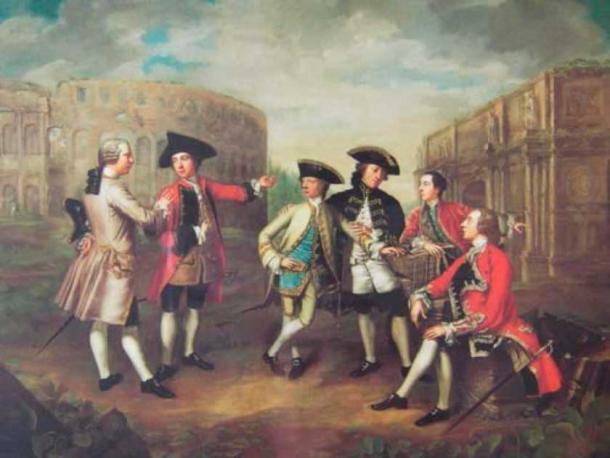
British Gentlemen in Rome, circa 1750 ( Public Domain )
Ushering in a New Era: The Industrial Revolution to Modern Times
Towards the end of the 18th century, tourism faced new challenges. The Industrial Revolution had changed tourism forever. Since people had more stable employment, they couldn’t take off for long periods of time to travel. Workers were stuck in their factories and businesses all week, unable to leave without jeopardizing the entire organization. Teamwork was essential and left no flexibility for vacationing.
However, the Industrial Revolution also helped people to travel more easily too. With new technology, travel became more efficient. Plus, for many workers, higher salaries contributed to their ability to go on a nice vacation. Additionally, business trips were increasing, to open more businesses and factories.
After several decades tied down to work and missing out on tourism experiences, workers began tiring of their overworked schedules. With more money came greater desire to expand one’s worldview. Planes, cars, and boats could be used to travel more quickly and comfortably than before. Office jobs also became more popular for their greater flexibility, and paychecks began to be used to see the world.
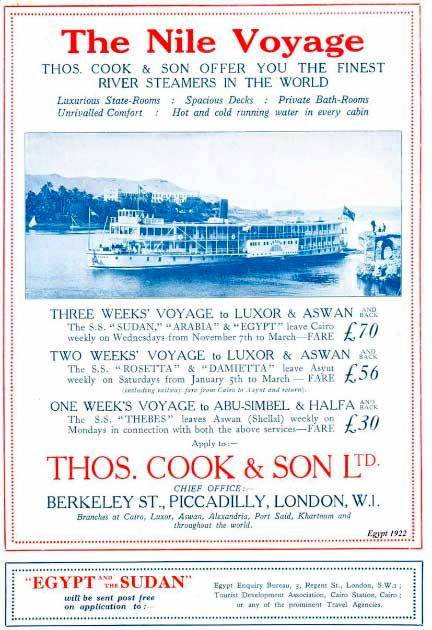
A 1922 Thomas Cook ad for a three-week trip on the Nile for £70 ($80) ( Public Domain )
At this point, tourism became an essential part of a fulfilling life. Countries such as France became hot spots for tourism because they had advanced technology and roads compared to other regions. Thomas Cook, an English businessman, inspired those without tourism experience to take a leap and go on an adventure. Later, paid work leave established for many in the 20th century ensured that more families could take the time to travel. It was the biggest increase in tourism since the Grand Tour Era.
Throughout the 20th century, hotels and motels became more common businesses worldwide, further fueling the tourism industry. Later, the development of credit cards helped lower-income families afford vacations more easily. Credit cards also helped universalize currency, so traveling between countries and buying necessities became more efficient. In the 21st century, traveling has become more accessible than ever.
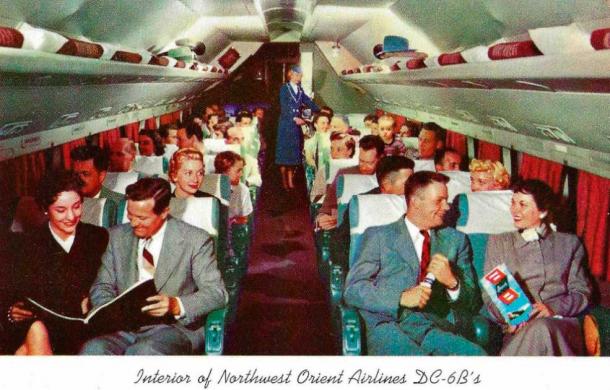
1957 postcard showing tourism airline interior (Joe Haupt / CC BY SA 2.0 )
Tourism Today: Roadside Attractions, Cruises, #VanLife, and more
Tourism in ancient times could be difficult, but those early tourists certainly made the most of it. Today, travel and tourism are certainly much simpler than they were back then. There is more available information about different countries that can be considered before taking a trip, and most frequent travelers are looking for more than just new scenery. Tourism agencies now seek to put together packages for those looking for adventure, romance, or knowledge.
The biggest difference between ancient and modern tourism is purpose. While ancient people traveled as a way to learn about the world around them, modern tourists seek to gather and savor experiences. Experiencing new places and cultures is more fulfilling than simply learning about the place online. If nothing else, travel nowadays is certainly much more efficient and luxurious than ever before. After all, aren’t you glad you don’t have to take a chariot everywhere?
Top image: Vintage postcard showing European tourism destinations. Source: Freesurf /Adobe Stock
By Lex Leigh
A Historical View of Tourism . Study.com. (n.d.). Available at: https://study.com/academy/lesson/a-historical-view-of-tourism.html
Gyr, U. (December 13, 2010). The History of Tourism: Structures on the Path to Modernity . EGO. Available at: http://ieg-ego.eu/en/threads/europe-on-the-road/the-history-of-tourism/ueli-gyr-the-history-of-tourism
Rodriguez, C. P. (June 16, 2020). Travelling for Pleasure: A Brief History of Tourism . Europeana. Available at: https://www.europeana.eu/en/blog/travelling-for-pleasure-a-brief-history-of-tourism
Stainton, H. (May 27, 2022). The Fascinating History of Tourism . Tourism Teacher. Available at: https://tourismteacher.com/history-of-tourism-2/
Tourism . (n.d.) Encyclopedia Britannica. Available at: https://www.britannica.com/topic/tourism

Lex Leigh is a former educator with several years of writing experience under her belt. She earned her BS in Microbiology with a minor in Psychology. Soon after this, she earned her MS in Education and worked as a secondary... Read More
Related Articles on Ancient-Origins

- Destinations
Moscow Travel Guide
Boasting a history that spans eight centuries, Russia's capital has evolved into an expansive megapolis which resembles a city-state. Its Cold War history and massive size might give it an intimidating image, but at its core Moscow is every bit the European city offering wealth of history and culture coupled with modernity and edginess. Travel here for strikingly impressive landmarks, high art, world class ballet, lavish celebrations, along with dynamic pockets of nightlife and trendy restaurants. — Nano Betts
- Terms of Use
- Privacy Policy
- Your US State Privacy Rights
- Children's Online Privacy Policy
- Interest-Based Ads
- About Nielsen Measurement
- Do Not Sell or Share My Personal Information
- Nat Geo Home
- Attend a Live Event
- Book a Trip
- Inspire Your Kids
- Shop Nat Geo
- Visit the D.C. Museum
- Learn About Our Impact
- Support Our Mission
- Advertise With Us
- Customer Service
- Renew Subscription
- Manage Your Subscription
- Work at Nat Geo
- Sign Up for Our Newsletters
- Contribute to Protect the Planet
Copyright © 1996-2015 National Geographic Society Copyright © 2015-2024 National Geographic Partners, LLC. All rights reserved
- United Arab Emirates
- Switzerland
- The Netherlands
- Puerto Rico
- United States
- New Zealand
- ➨ Choose from World Map
- Budget Travel
- Family Travel
- Getting Around
- Visas & Passports
- Work with Us
Browsing Category
- Czech Republic
- Saint Martin
- Uncategorized

Moscow Travel Guide: Best Things to Do + More [2023]
· everything to know about visiting moscow, including the best things to do and how to get around. ·.

Moscow is Russia’s vibrant capital city, and it also happens to be the largest city in all of Europe. The city’s long and infamous history makes it one of the most unique places we have ever visited.
The architecture ranges from centuries-old palaces to uniform, gray concrete buildings. The people range from cold and private to warm and welcoming. Moscow is a city is strong juxtapositions, and we learned a lot during our time there.
This post will break down all you need to know about visiting Moscow, including the best things to do, how to get there, how to get around, and more.

The Best Things to Do in Moscow
1. explore the red square.
The Red Square is the heart of Moscow. Most of the city’s top attractions can be found here, including just about everything on this list. The Kremlin, St. Basil’s Cathedral, and Lenin’s Mausoleum are all located here, and the State Historical Museum and GUM are not far from here, either.
The Red Square is a common home for parades, protests, and seasonal celebrations. There are massive Christmas celebrations here, with food vendors and carnival rides set up in numbers.

2. Check Out the Ziferblat
The Ziferblat is a café in Moscow that is unlike any café we have ever been to. While most cafes charge you for your drinks and food, the Ziferblat charges you for your time.
Upon arrival, you are given a clock. When you leave, the barista calculates how much time you spent in the café and charges you accordingly. This concept was created to help visitors to be more intentional with their time, and the cafe itself is incredibly charming.
For a detailed look at everything you need to know before you visit, make sure you read my post about visiting the Ziferblat Cafe in Moscow .


3. Marvel at St. Basil’s Cathedral
St. Basil’s Cathedral is one of the most iconic churches in the world, and it was the single thing we were most excited to see while in Moscow. Built almost 500 years ago, St. Basil’s Cathedral is recognized by its colorful domes and whimsical style. The church is of the Russian Orthodox faith, and the inside is just as wondrous as the outside.
St. Basil’s Cathedral is located on the edge of the Red Square, making it incredibly convenient to visit. Entrance for non-worshippers costs 800 rubles, and tickets can be bought at the church

4. Explore the Kremlin
The Kremlin is the largest active fortress in Europe, and it is the site of most of Russia’s government affairs. In addition to government buildings, the Kremlin Complex is filled with courtyards, towers, and museums that are open to the public. If you have the time, you could spend a couple of days fully exploring all that there is to see in the Kremlin.

5. Walk Through Lenin’s Mausoleum
Vladimir Lenin is one of the most important figures in Russian history, and his body is located perfectly embalmed in a mausoleum in the Red Square. The Mausoleum is open to the public to visit, and as long as you are willing to go through a few security checks, it is easily one of the best things to do in Moscow. Its convenient location in the Red Square makes it a can’t miss attraction.
There is absolutely no photography allowed inside the Mausoleum. Do not test this rule.

6. Wander Along Arbat Street
The Arbat is a very popular street in Moscow that is lined with stores, cafes, and other touristy attractions. It is one of the oldest streets in the city, dating back to the 1400s. This street is both quaint and trendy, and there are many walking tours that introduce tourists to the neighborhood’s wonders and highlights.

7. Catch a Show at the Bolshoi Theatre
As a lover of the arts, it is hard to think of Moscow and not think of ballet. Russia has always been a top dog in the world of fine arts, and Bolshoi Theater is one of the best places to catch a performance. We were lucky enough to attend an Opera here, and it is a venue that you don’t want to miss out on if you enjoy opera, ballet, or orchestral performances.
8. Visit the State Historical Museum
The State Historical Museum is one of the most respected museums in Moscow. Despite its name, it is not really focused on the history of Russia as a nation. Rather, it contains a collection of artifacts from all throughout Russia’s history.
The museum’s collection is very broad in nature. It houses some items from indigenous tribes that used to occupy the region, pieces collected by the Romanov family, and more.
9. Wander Around GUM
GUM is an absolutely massive mall within walking distance of the Red Square. It isn’t just the size that draws visitors here; it’s the sense of luxury. The mall is so beautiful inside, much like the metro stations.
While visiting a mall might not sound like it belongs on a bucket list, this mall does. You will not want to miss out on visiting GUM while in Moscow.

10. Admire the Cathedral of Christ the Saviour
While St. Basil’s Cathedral is the most iconic church in Moscow, it isn’t the only one. The Cathedral of Christ the Saviour is absolutely stunning, with massive golden domes. It is the tallest Orthodox church in the world, and it is the seat of the Orthodox Patriarch of Moscow.
It is located just about a mile from the Red Square, just south of the Kremlin Complex. You can walk to it from the Red Square in about 20 minutes.
How to Get to Moscow
Flying to moscow.
Moscow has three major international airports: Sheremetyevo (SVO) , Domodedovo (DMO) , and Vnukovo (VKO) . All three of them are directly connected to downtown Moscow by the Aeroexpress trains, which leave every 30 minutes throughout the day. By Aeroexpress train, you can expect to get to the city center in 25-45 minutes depending on the airport that you fly into.
Sheremetyevo is the biggest and busiest of the three airports, and it is the one you are most likely to fly into – especially if you are coming from outside of Europe or the Caucus region. We flew into Sheremetyevo on a direct flight from New York City.
I usually provide backup airport options, because flying right into the city isn’t always the cheapest way to get where you’re going. Unfortunately, when it comes to Moscow, don’t really have a choice other than to fly right into Moscow. It is a very remote city, and it is usually the cheapest place to fly into in Russia as a whole.
Since Sheremetyevo is so busy, you will probably find a great flight option anyway. I wrote in my post about finding cheap flights that using hub airports will lead to more affordable airfare, and the same logic applies here. Even though Russia’s national airline, Aeroflot, is no longer a member of the SkyTeam Alliance, Moscow is still a major hub connecting passengers from all over the world.

READ OUR CHEAT SHEET
Train or Bus to Moscow
Trains and buses are one of the most popular ways to get around Europe. However, they’re of very little use when you’re trying to get to Moscow.
Moscow is hundreds of miles from the nearest major cities. The only major European city that can even be reached within 8 hours on the ground is St. Petersburg, and even the Baltic capitals of Riga, Vilnius, and Tallinn are over 12 hours away.
If you want to get to Moscow, the best option is almost always to fly. While the train routes to Moscow are scenic, they simply take forever.
How to Get Around Moscow
METRO | TROLLEYS | TRAMS | BUSES
Moscow has one of the most memorable metro systems in the world. Its metro lines are very deep underground, and the stations are absolutely stunning. Each station has its own unique style, but all of them contain escalators that seem to go on forever.

The system was built in an effort to showcase the power of the Soviet Union and its bright future. The plans were a form of propaganda, but they resulted in what is still one of the most visually appealing subway systems on earth.
Moscow’s metro system isn’t just pretty. It is also very useful and accessible. The system has 17 lines that connect the city and its surrounding area.
But wait; there’s more!
The Moscow metro system is also incredibly affordable, with each ride costing less than a dollar. The metro is by far the best way to get around Moscow, as it is almost impossible to beat the connection times and the low cost to ride.
Tickets can be bought at electronic, English-speaking kiosks in stations, or directly from ticket counters at certain larger stations. There are also day passes available, which are a very solid option if you plan on riding the metro several times per day.

The metro is by far the best way to get around Moscow.
In addition to the metro system, Moscow also has a network of buses, trams, and trolleys. This system is nowhere near as convenient or well-connected as the metro, though, and is likely of little use to you during your trip. There is no Uber in Moscow, but a similar app named Yandex is available if you need a ride in a pinch.
How Many Days Do You Need in Moscow?
Moscow is the biggest city in all of Europe, and it is absolutely loaded with things to do. You could spend weeks in Moscow and still find new things to do. Of course, most travelers don’t have that kind of time to spend in one place!
I recommend spending no less than three full days in Moscow, and ideally closer to five or seven.
Moscow is very spread out, and it can take some time to get from one major point to another. There are also so many places that are nice to just sit back and relax, which is hard to do when you’re in a hurry trying to cram activities into just a few days.
If you only have a week to visit Russia, I’d advise spending all of the time in one city. If you decide to split your time between Moscow and St. Petersburg, I recommend not trying to squeeze in any day trips beyond those two cities.

When Is the Best Time of the Year to Visit Moscow?
There are two different ways to approach this question. Personally, I think the best time to visit Moscow is around Christmas and New Year’s Day. While the weather will be absolutely freezing, Moscow is a surreal winter wonderland in December and January.
We were in Moscow right before Christmas. While it was very cold, you can always bundle up. Exploring the Christmas markets and pop-up ice skating rinks throughout Moscow is one of my favorite memories from anywhere I’ve traveled, and I dream of going back to do it again.
If you aren’t fond of the cold, Moscow is beautiful in the summer. It tends to get pretty cold in the shoulder seasons, so if you want warm weather, you should plan to visit in the summer. Moscow actually gets pretty warm in July and August, and there are a bunch of fantastic places to soak up the sun within the city.
The best time to visit Moscow is either around Christmas or from late May to August.

Is Moscow Safe to Visit?
While Moscow is a truly wonderful city, there’s no denying that visiting Russia comes with risks. As the country is run by an infamous communist dictator, concerns about visiting are valid. While we didn’t experience any sort of threat or negative treatment during our time in Moscow, we visited in a peaceful time.
In our experience, Russia doesn’t seem to detain normal Americans or Westerners to use as pawns. As a regular person, as long as you don’t commit any crimes, there is a slim chance you will run into any issues. However, Russia will not hesitate to enforce its laws against foreigners, and illegal behaviors will likely land you in a very compromising position.
Russia will not hesitate to enforce its laws against foreigners, and illegal behaviors will likely land you in a very compromising position.
To make matters worse, Russia has a bad reputation for gang violence. While the Russian mafia has very little interest in normal Western tourists, they won’t hesitate to pick a fight with anyone who ventures into their sphere of influence. If you seek out illegal substances or activities, you could be a target of the mafia.
If you seek out illegal substances or activities, you could be a target of the mafia.
Finally, since Russia’s invasion of Ukraine, things are all very different. Russia is currently at war, and there are battles raging within 8 hours of Moscow. While it is still relatively safe to visit, that could change at any time as the war with Ukraine continues.
Is Moscow Worth Visiting?
Without a doubt, Moscow is worth visiting. It is one of the most unique major cities we have ever visited, and we hope to make it back one day. The Russian Orthodox churches are stunning, the city’s history is unlike any other, and the food is to die for.
While many visitors prefer St. Petersburg to Moscow, I think Moscow deserves a lot of hype of its own. Moscow is the beating heart of Russian culture and history, and it’s a place I highly recommend checking out if you have the chance.

That’s all we have for you about Moscow! I hope this post was helpful as you plan your trip to Russia’s capital.
Have you been to Moscow? Or is this your first time visiting? Comment below if you have anything to add to our travel guide!
Hi, I'm Greg. I'm an avid traveler who has traveled to over 50 countries all around the world with my wife and kids. I've lived in Italy, Mexico, China, and the United States, and I dream of moving abroad again in the future. With this blog, I provide my audience with detailed destination guides to my favorite places and pro-tips to make travel as stress-free as possible.
Leave a comment
Save my name, email, and website in this browser for the next time I comment.
Meet The Author - Greg

Recent Post

How Much Does a Trip to Egypt Cost: Budget Breakdown
March 10, 2024

Best Time to Visit the India Gate in Delhi [2024]
March 1, 2024

Flying with a Sinus Infection: Tips to Avoid Pain
February 20, 2024

11 Best Things to Do in Breckenridge Besides Skiing
February 12, 2024

10 Best Beaches in Mexico for Families (We Lived Here)
February 3, 2024

- Skip to primary navigation
- Skip to main content
- Skip to primary sidebar
- Skip to footer
TravelAwaits
Our mission is to serve the 50+ traveler who's ready to cross a few items off their bucket list.
19 Unique And Fabulous Experiences In Moscow

- Destinations
Thinking of visiting Russia? When visiting such a famous city, one must, of course, visit the iconic landmarks first. Moscow has plenty of those, most of them in the center of the city, which is very well-planned for tourists. Once you’ve seen the sights that are on most travelers’ lists, it’s time to branch out and visit some of the lesser-known sites, and there are some fascinating places to see and things to do.
I know this list is long, but I just couldn’t help myself. You probably won’t have the time to see them all. But that’s okay. Just scroll through the list and choose what sounds the most interesting to you. Where possible, make sure to book in advance, as things can get crowded, especially during high season.

1. The Red Square, Kremlin, And Surroundings
Red Square (Krasnya Ploshad) is the heart and soul of Russia, and where much of the country’s history has unfolded. This is the most famous landmark in Moscow and indeed the whole country, it’s an absolute must-do! The square is always full of people and has a rather festive atmosphere!
Saint Basil’s Cathedral
This is the famous church with the rainbow-colored, onion-domed roof. The cathedral was commissioned in the 1500s by Ivan the Terrible and according to legend, the Tsar thought it was so beautiful, that he ordered that the architect’s eyes be cut out afterward, so he could never build anything more beautiful! He wasn’t called Ivan the Terrible for no reason!
Lenin’s Mausoleum
The “love-it-or-hate-it” of tourist attractions in Russia. A glass sarcophagus containing the embalmed body of Russian revolutionary, Vladimir Lenin. It may seem a bit bizarre to display the mummy of a person, but it has been there for almost half a century and the 2.5 million visitors who come each year, clearly feel the queuing and thorough body search are worth it, to be in Lenin’s presence.
Pro Tip: no photos and no loud talking are allowed inside the Mausoleum.
Eternal Flame
There is an Eternal Flame in honor of an unknown soldier on the left side of Red Square. The hourly changing of the guards is worth seeing.
The Kremlin is the official residence of the Russian president. You can see it from the outside, or you can take an excursion to one of the museums located inside. This is the biggest active fortress in Europe, and holds a week’s worth of attractions! Once behind the 7,332-feet of walls, there are five squares, four cathedrals, 20 towers, various museums, and the world’s largest bell and cannon to see. Worth a special mention is the Armory Chamber that houses a collection of the famous Faberge Eggs.
Pro Tip: You can only go inside the Kremlin if you are part of a tourist group.

2. Bolshoi Theatre
Bolshoi Theatre translates to “The Big Theatre” in Russian, and the building is home to both the Bolshoi Ballet and Bolshoi Opera — among the oldest and most famous ballet and opera companies in the world.
Pro Tip: It’s hard to get an inexpensive ticket, so if you’re reading well in advance of going to Moscow then try buying tickets on the official website . Last-minute tickets cost around $250 per person. If this is out of your budget, about an hour before a performance, you can try buying a ticket at the entrance from a reseller. Most can speak enough English to negotiate the price.
Tour the Bolshoi Theatre: You can take a group guided tour of the Bolshoi Theatre which focuses on the history and architecture of the theatre and behind the scenes. There’s an English language tour that lasts 2 hours and costs around $300 for a group of up to six.

3. Luxury Shopping At GUM And TSUM
Russia’s main department store, GUM, has a stunning interior that is home to over 100 high-end boutiques, selling a variety of brands: from luxurious Dior to the more affordable Zara. Even if shopping is not on your Moscow to-do list GUM is still worth a visit; the glass-roofed arcade faces Red Square and offers a variety of classy eateries. TSUM, one of the biggest luxury malls in town, is right behind the Bolshoi and GUM. It’s an imposing building with lots of history, and worth a visit just for its design and its glass roof.

4. Christ The Savior Cathedral
This is one of Russia’s most visited cathedrals and is a newer addition to the gorgeous array of Muscovite cathedrals, but don’t let its young age fool you. After perestroika, in the early 90s, the revived Russian Orthodox Church was given permission to build a cathedral on this site. It did the location honors and built the largest temple of the Christian Orthodox Church. The façade is as grand as you’d expect, but it’s the inside that will mesmerize you, with its domes, gold, gorgeous paintings, and decor!
The cathedral is located just a few hundred feet away from the Kremlin and was the site of the infamous Pussy Riot protest against Putin back in 2012.
Pro Tip: Bring a shawl to cover your hair as is the local custom.

5. Gorky Park
Moscow’s premier green space, Gorky Park (Park Gor’kogo) is the city’s biggest and most famous park. There is entertainment on offer here for every taste, from outdoor dancing sessions to yoga classes, volleyball, ping-pong, rollerblading, and bike and boat rental in summer. In winter, half the park turns into a huge ice skating rink. Gorky Park is also home to an open-air movie theater and the Garage Museum of Contemporary Art. There is also Muzeon Art Park, a dynamic contemporary space with a unique collection of 700 sculptures. It is located right in front of Gorky Park.
6. Sparrow Hills Park
If you take a walk from Gorky Park, along the Moscow River embankment, you’ll end up in the city’s other legendary park, Sparrow Hills. Although the park doesn’t offer as many activities as its hip neighbor, it has a great panoramic view of the city
Pro Tip: You can take a free walking tour to all of the above attractions with an English-speaking guide.

7. River Cruising
One of the best ways to experience Moscow, and see all the famous landmarks, but from a different angle, is from the Moscow River. Take a river cruise. Avoid the tourist crowds. There are little nameless old boats that do the cruise, but if you are looking for a more luxurious experience take the Radisson Blu cruise and enjoy the sights with some good food and a glass of wine.

8. Metro Hopping
Inaugurated in the 1930s, the Moscow Metro system is one of the oldest and most beautiful in the world. Started in Stalinist times, each station is a work of art in its own right. I’d recommend touring the stations between 11 a.m. and 4 p.m. This way, you’ll be able to properly see it without the crowds. Ideally, I’d recommend taking a tour with a knowledgeable guide with GuruWalk, who will tell you stories of forgotten stations and how the history of the country is interconnected with the metro development. If going by yourself, then I definitely recommend checking out: Mayakovskaya, Ploschad Revolutsii, Kievskaya, Kropotkinskaya, Kurskaya, and Novoslobodskaya stations.
Visit the free Moscow Metro Museum: For real train enthusiasts, located in the southern vestibule of Sportivnaya station is a small free museum. Here you can take a peek into the driver’s cabin, see a collection of metro tokens from different cities, and see different models of a turnstile, traffic lights, escalator, and more.

9. Moscow State University View
In his effort to create a grander Moscow, Stalin had seven skyscrapers built in different parts of town; they’re called the Seven Sisters. The largest of these buildings and the one with the best view is the main building of the Moscow State University. Although this is a little outside the city center, the view is more than worth it.

10. Izmailovsky Market
Mostly known for the city’s largest flea market, the district of Izmaylovo is home to a maze of shops where you can get just about anything, from artisan crafts to traditional fur hats, handcrafted jewelry, fascinating Soviet memorabilia, and antiquities. It’s also one of Moscow’s largest green spaces. There are often no price tags, so be prepared to haggle a bit. Head to one of the market cafes for a warming mulled wine before continuing your shopping spree.
The History of Vodka Museum is found here, and the museum’s restaurant is the perfect place to sample various brands of the national drink.
Once you’ve covered the more touristy spots, Moscow still has plenty to offer, and the places below will also be full of locals! So for some local vibes, I would strongly recommend the spots below!

11. Moscow City
With a completely different vibe, Moscow City (also referred to as Moscow International Business Center) is like a mini Dubai, with lots of impressive tall glass buildings. Here is where you’ll find the best rooftops in towns, like Ruski Restaurant, the highest restaurant both in Moscow City and in Europe. Moscow City is great for crowd-free shopping and the best panoramic views of the city.

12. Tretyakov Gallery
Tretyakov Gallery started as the private collection of the Tretyakov brothers, who were 19th-century philanthropists. They gave their private collection to the government after their deaths. If there is just one museum you visit in Moscow, I recommend this one!

13. Tsaritsyno Museum-Reserve
Tsaritsyno was a residence of Catherine the Great more than two centuries ago. It became derelict during the Soviet era but has now been fully renovated. With its opulently decorated buildings, gardens, meadows, and forests, Tsaritsyno Park is the perfect place for a green respite in Moscow.

14. Kolomenskoye
A 10-minute metro ride from the city center is Kolomenskoe Museum-Reserve, where you can get an idea of what Russia looked like 200 years ago. You’ll find ancient churches (one dating back to the 16th century), the oldest garden in Moscow, and the wonderful fairytale wooden palace of Tsar Alexey Mikhailovich, father of Peter the Great.

15. Ostankino TV Tower
Built in 1967, Ostankino TV Tower was the tallest free-standing construction in the world at the time, it’s still the 8th tallest building in the world and the highest in Europe. It’s also the best observation deck, with a glass floor and 360-degree views. The speedy elevators take you 1,105 feet in next to no time.
Pro Tip: You need to book in advance; entrance is based on specific ticket times and the capacity is limited and only a certain number of tourists are allowed per day. Don’t forget your passport, you’ll need it to get through security.

16. Zaryadye Park
Zaryadye is a newly opened, landscaped urban park so new you won’t find it in a lot of tour guides. The park is near Red Square and is divided into four climatic zones: forest, steppe, tundra, and floodplains, depicting the variety of climatic zones in Russia.
These last three suggestions are a little quirky, but all are really worth checking out.
17. Museum Of Soviet Arcade Games
Release your inner child playing on 66 arcade machines from the Soviet era! What a great way to spend a couple of hours when tired of visiting museums and palaces. The staff speaks excellent English and are happy to explain how the games work.

18. Moscow Rooftop Tour
Take a 1-hour private Moscow rooftop tour with an experienced roofer. I can just about guarantee none of your friends will be able to say they’ve done it! For your comfort, I recommend wearing comfortable shoes. Take your camera, there are some amazing photo opportunities out there!

19. Sanduny Banya
This classical Russian bathhouse opened its doors in 1808 and is famous for combining traditional Russian banya services with luxurious interiors and service. If you enjoy spas and saunas, then you should experience a Russian bathhouse at least once in your life! Go with an open mind and hire a specialist to steam you as it’s meant to be done — by being beaten repeatedly with a besom (a leafy branch)! This is said to improve circulation, but is best done by a professional!
So there you have my list of things to do in Moscow. I could have gone on and on and on, but I didn’t want to try your patience! There are so many things to do in this vibrant city that you’ll definitely need to allocate several days for exploring.
Here are some other reasons to visit Moscow and Russia:
- 7 Reasons To Put Moscow On Your Travel Bucket List
- Russia 30 Years (And 30 Pounds) Ago
- Massive Mysterious Craters Appearing Again In Siberia

Born and raised in Sydney, Australia, before moving to Africa at the age of 21, Sarah Kingdom is a mountain climber and guide, traveler, yoga teacher, trail runner, and mother of two. When she is not climbing or traveling she lives on a cattle ranch in central Zambia. She guides and runs trips regularly in India, Nepal, Tibet, Russia, and Ethiopia, taking climbers up Tanzania’s Mount Kilimanjaro numerous times a year.

Interesting Facts
20 Best Vacation Destinations for History Buffs
Posted: April 28, 2024 | Last updated: April 28, 2024

History isn’t just about dusty textbooks and dates to memorize. It’s the tangible connection to the people and events that shaped our world. For history buffs, travel becomes a pilgrimage, with each landmark a thrilling chapter brought to life. Whether you’re fascinated by ancient empires, battlefield bravery, or groundbreaking cultural movements, these destinations offer a time-travel experience unlike any other.
Of course, with so many incredible historical sites worldwide, narrowing down your itinerary can be daunting. That’s why we’ve curated this list, avoiding some of the obvious choices that top every list in favor of some hidden gems and fresh perspectives on familiar favorites.
Let’s embark on a journey through time, revealing 20 destinations brimming with history .
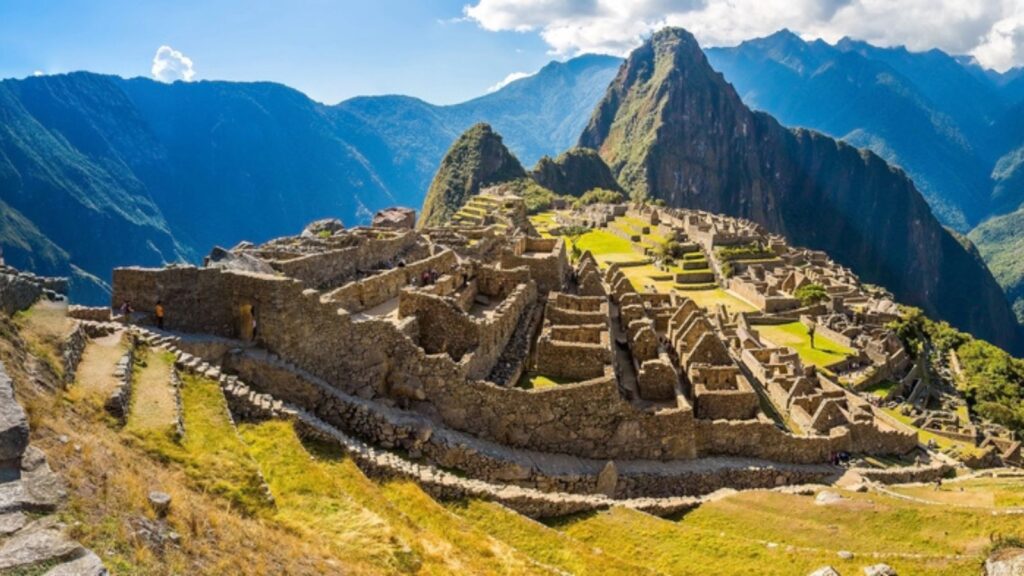
1. Machu Picchu, Peru
This Incan citadel, perched high in the Andes Mountains, is more than a bucket list destination; it’s a marvel of ancient engineering. Imagine the lives of those who built this city in the clouds. Hiking the Inca Trail offers a deeper connection to the landscape , but even viewing it from afar feels mystical and timeless.
Book your entry permits for Machu Picchu far in advance, as numbers are limited to preserve the site. The shoulder seasons (spring and fall) offer smaller crowds and milder weather.
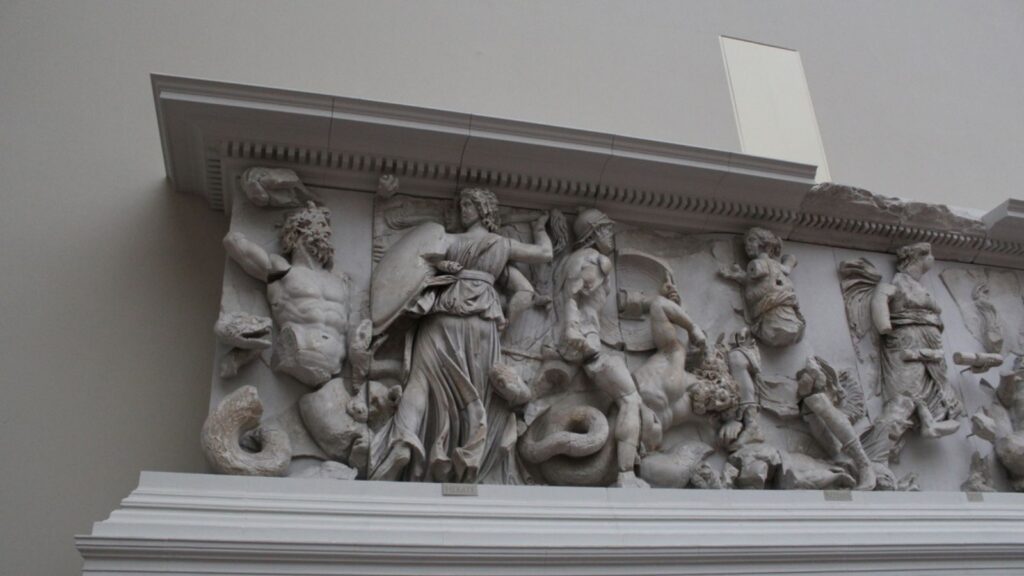
2. Rome, Italy
The Eternal City is a living museum where layers of history peel back with every step. From the iconic Colosseum to the Pantheon’s architectural perfection, ancient Rome’s power reverberates around you. Toss a coin in the Trevi Fountain, savor gelato on the Spanish Steps, or explore the Vatican’s vast treasures… Rome is sensory overload for anyone who loves history come to life.
Learn a few key Italian phrases to enhance interactions with locals. Invest in the Roma Pass for free public transportation and discounted entry to major sites.

3. The Pyramids of Giza, Egypt
Standing in the shadow of these ancient wonders is a humbling experience. There’s a reason there’s so much hype around them. Their scale and age defy easy comprehension. Exploring the Great Pyramid of Khufu, wandering through nearby tombs, and even venturing into the desert on a camel ride brings ancient Egypt vividly to life.
Go during the cooler shoulder season months to avoid the most intense heat. For a well-rounded Egyptian experience, combine your visit to the pyramids with exploring Cairo’s Islamic architecture and vibrant markets.

4. Carthage, Tunisia
Often overlooked in favor of Egypt or Rome, Tunisia’s history enthralls any enthusiast of ancient civilizations. Carthage, once a mighty rival to Rome, offers surprisingly well-preserved Punic ruins. Don’t miss the Baths of Antoninus, remnants of villas, and the Tophet, a Carthaginian burial ground that reveals much about their culture.
Tunisia is surprisingly affordable, allowing history buffs on a budget to explore. Its beaches also beckon, making Carthage a perfect addition to a trip that combines history with a touch of relaxation.

5. Angkor Wat, Cambodia
This sprawling temple complex is the epitome of jungle-clad ruins. Echoes of the once-mighty Khmer Empire surround you. Wandering through crumbling passageways, gazing at intricately carved reliefs, and the iconic tree roots entwined with temples evoke a sense of adventure and the fleeting nature of even the grandest civilizations.
To beat the crowds and the midday heat, arrive at Angkor Wat at sunrise and explore by bicycle. Angkor Wat is the most famous temple, but dozens more dot the area, offering even more discoveries.
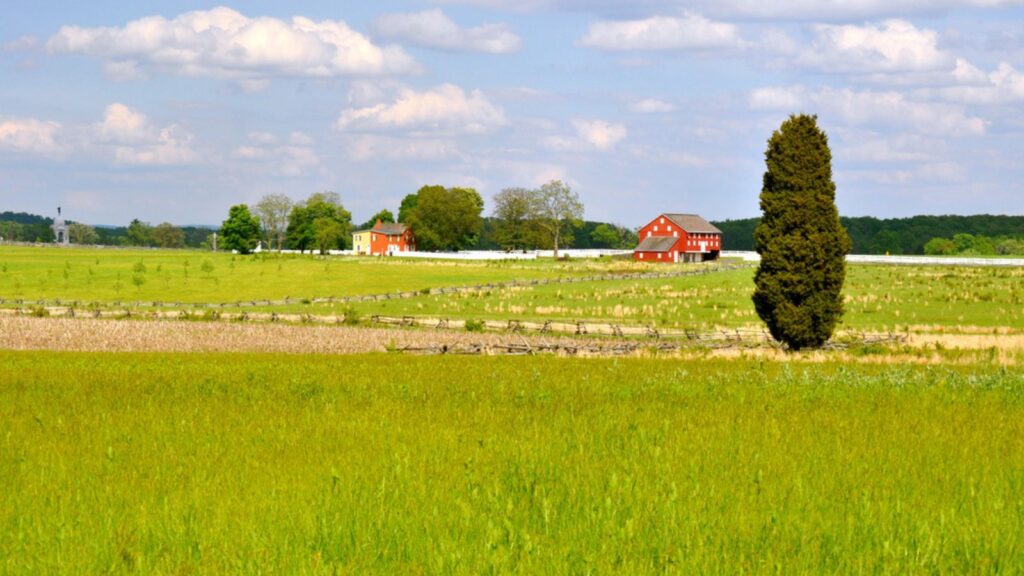
6. Gettysburg National Military Park, Pennsylvania, USA
Civil War buffs will feel hallowed ground beneath their feet in Gettysburg . This battlefield saw pivotal moments in American history. Stand on Little Round Top, walk Pickett’s Charge, or explore the museums that bring this bloody chapter of history to life through artifacts, exhibits, and even living history reenactments.
Consider a licensed battlefield guide to gain in-depth knowledge about the strategies, key figures, and the battle’s impact that shaped the nation’s future.
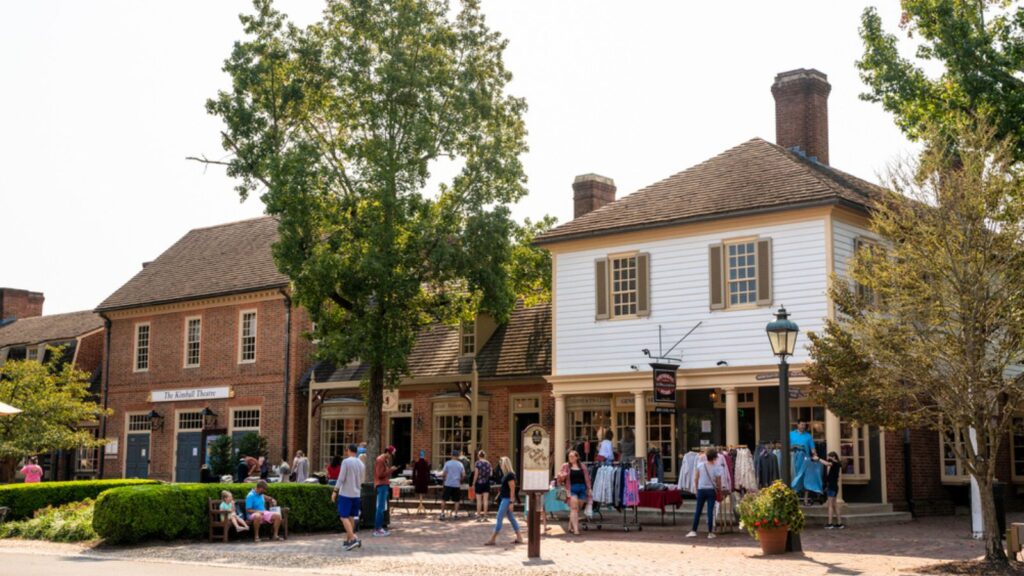
7. Colonial Williamsburg, Virginia, USA
Step back into the 18th century at this meticulously preserved living history town. Witness skilled artisans practicing period crafts, dine on colonial-inspired fare, and interact with costumed interpreters bringing the struggles and triumphs of Revolutionary America to life. Williamsburg is an immersive history for all ages.
Special events and themed programming occur throughout the year. Opt for a multi-day pass to fully experience all that Williamsburg offers.

8. Xi’an, China
Home to the Terracotta Army, Xi’an is essential for those fascinated by ancient China . Standing amidst the thousands of life-sized clay warriors is awe-inspiring. Beyond this iconic sight, the city boasts ancient walls, bustling markets, and imperial palaces that unveil China’s rich dynastic past.
Foodies will love Xi’an. From vibrant street food to hand-pulled noodles, the city’s culinary scene reflects its historical position on the Silk Road.

9. Stonehenge, England
Shrouded in mystery, this prehistoric monument draws visitors from across the globe. While its exact purpose is still debated, its enduring power is undeniable. Walk the path surrounding the megaliths, stand in awe of their size, and ponder the ingenuity of the Neolithic people who built them long before modern machinery existed.
Book timed tickets as Stonehenge has visitor limits (and be ready for the lines!). Combine your visit with nearby Avebury, another fascinating Neolithic stone circle complex.
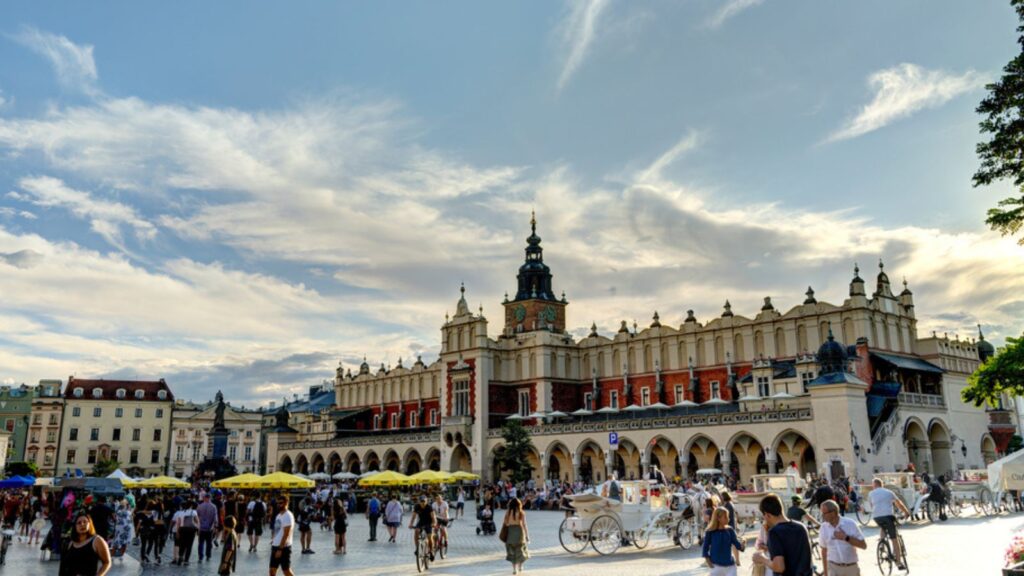
10. Krakow, Poland
Poland’s former royal capital escaped heavy damage during WWII, making it a treasure trove of medieval architecture. The vast Market Square, Wawel Castle, and the moving remnants of the Jewish Quarter bear witness to Poland’s complex and often tragic history. It’s a city as beautiful as it is thought-provoking.
Nearby Auschwitz-Birkenau offers a sobering look at the horrors of the Holocaust. Visiting both Auschwitz and vibrant Krakow provides a powerful study of contrasts.
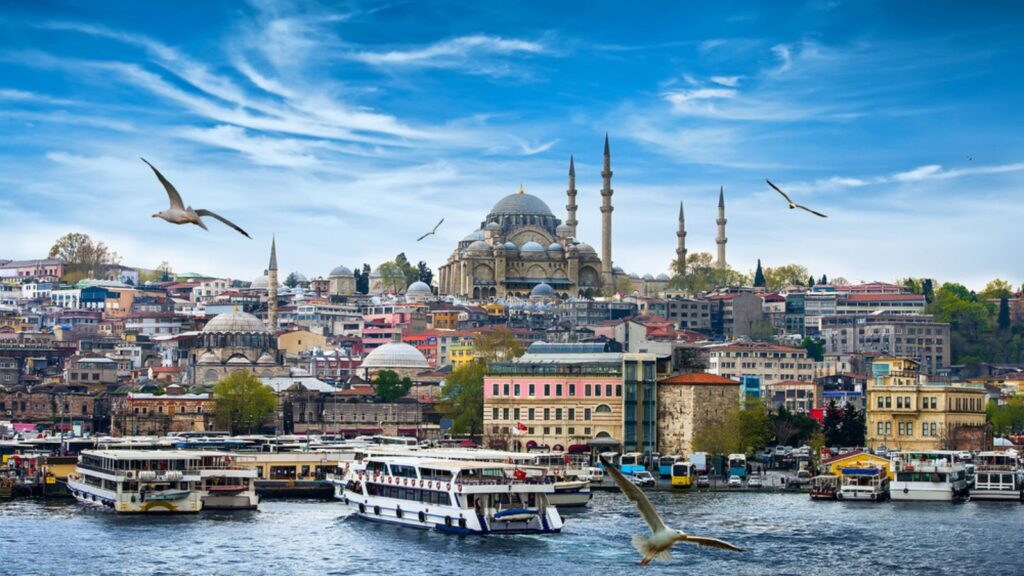
11. Istanbul, Turkey
Originally Constantinople, this city bridges continents and eras. From the Hagia Sophia’s Byzantine splendor to the Ottoman-era Topkapi Palace, Istanbul offers an architectural journey through empires. Get lost in the Grand Bazaar’s chaos, cruise the Bosphorus, and savor flavors that blend European and Middle Eastern influences for a multi-sensory experience.
Istanbul is vast. Focus on one or two key neighborhoods per day to avoid feeling overwhelmed. Seek traditional Turkish baths for relaxation after miles of walking historical cobblestone streets.

12. Kyoto, Japan
Japan’s ancient capital overflows with temples, shrines, and gardens that seem out of a storybook. Immerse yourself in Zen tranquility at a rock garden, witness Geisha traditions in Gion, or hike through bamboo forests outside the city center. Kyoto embodies a timeless Japan in contrast to modern Tokyo’s frantic energy.
Spring cherry blossom season or fall foliage draws the biggest crowds. Consider visiting just before or after these peak seasons for a less crowded, yet still beautiful, experience.

13. Mesa Verde National Park, Colorado, USA
Ancestral Puebloan people built extraordinary cliff dwellings into the sides of canyons at Mesa Verde. Exploring these well-preserved structures, imagining how families lived here centuries ago, is a profound experience unique to the American Southwest. This UNESCO World Heritage Site offers a glimpse into a vanished culture.
Guided ranger tours are worth it to access certain dwellings. For a scenic journey, consider staying in nearby Durango and taking the historic train up to the park.
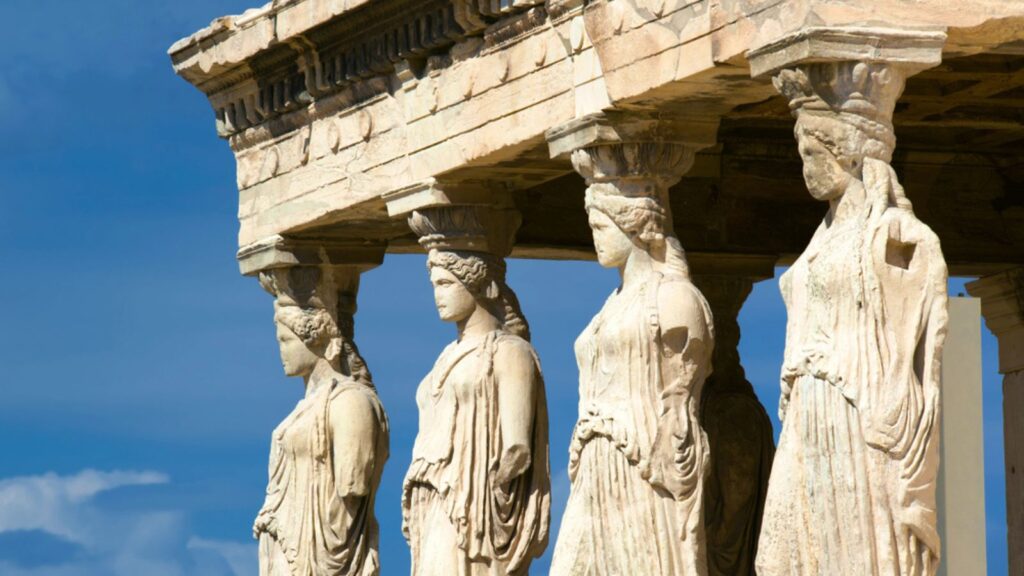
14. The Acropolis, Athens, Greece
The Parthenon atop the Acropolis is a timeless symbol of the birthplace of democracy and Western philosophy. However, this hilltop complex holds more than just this instantly recognizable icon. Explore the Erechtheion with its unique female statues, the Odeon of Herodes Atticus, and the Acropolis Museum with its wealth of ancient treasures.
Visit in the early morning to beat the crowds and the worst of the midday heat (which is especially brutal in summer).
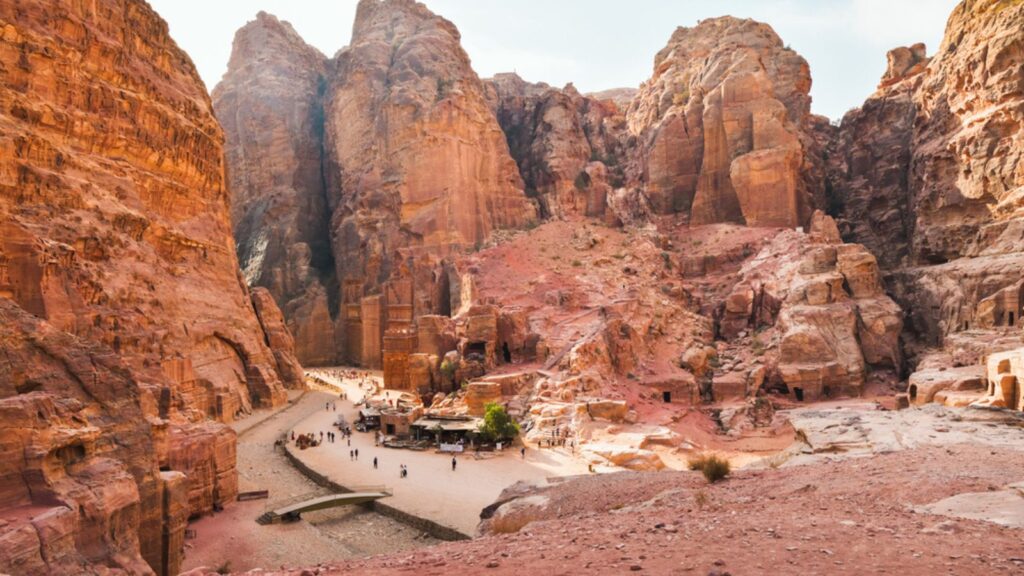
15. Petra, Jordan
This “lost city” carved out of rose-colored cliffs is unlike anything else. Approach through the winding Siq canyon, emerge to behold the Treasury’s intricate facade…it feels like an Indiana Jones film. Petra’s Nabataean builders were master engineers, and exploring the tombs, temples, and water channels reveals their skill.
Opt for the Petra at Night experience, where the Treasury is illuminated by candles, creating a magical atmosphere.
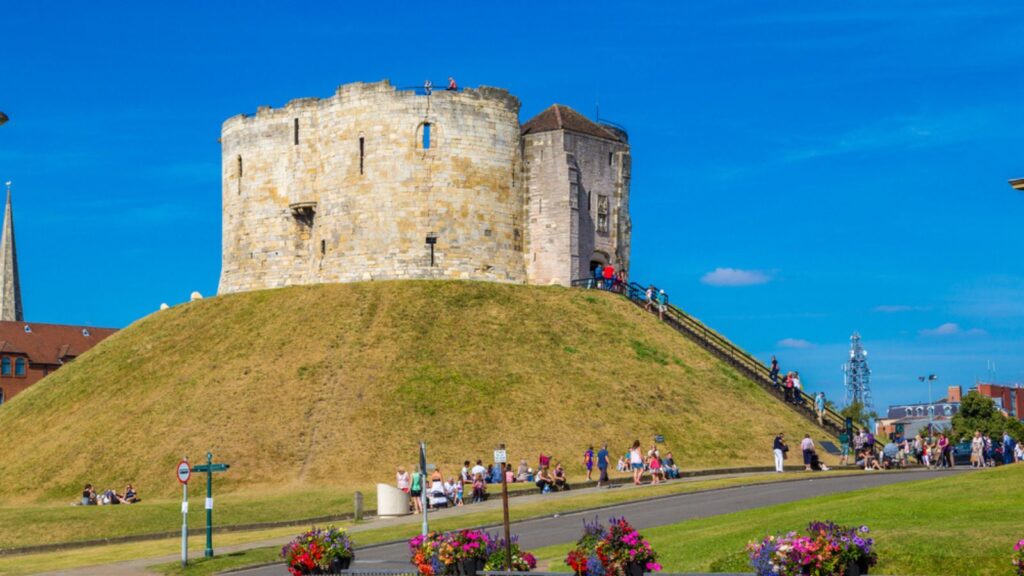
16. York, England
Vikings, Romans, and medieval kings all left their mark on York. Walk the Roman walls, marvel at the Gothic splendor of York Minster, and wander the Shambles, a street seemingly unchanged for centuries. York has a charming, walkable feel, perfect for pub hopping and soaking up its history-filled atmosphere.
Seek out Jorvik Viking Centre for a glimpse of York’s Norse history. Yorkshire itself is filled with historic homes and ruined abbeys well worth exploring.
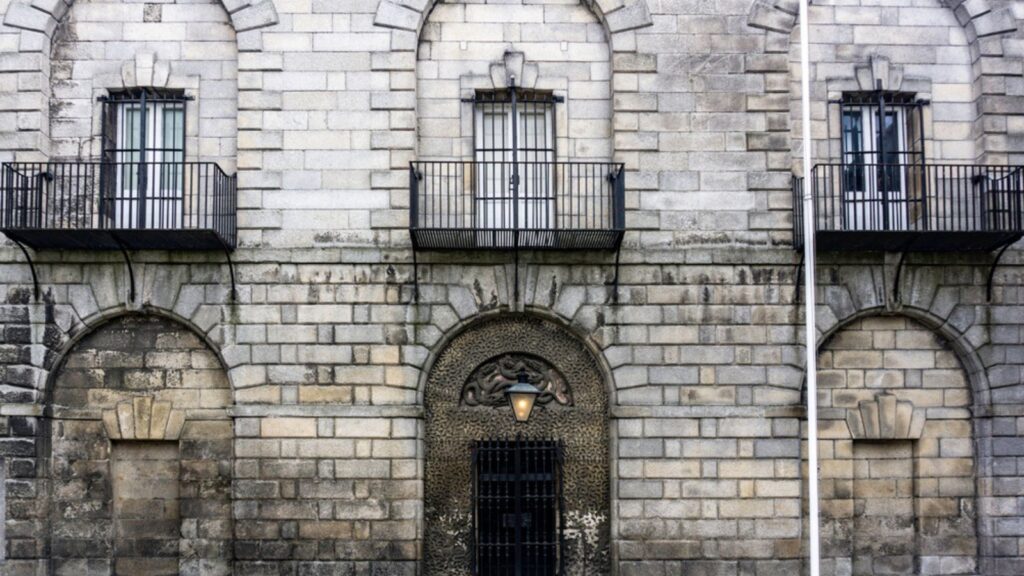
17. Kilmainham Gaol, Dublin, Ireland
This forbidding former prison in Dublin bears witness to Ireland’s turbulent fight for independence. Touring the chilling cells and hearing stories of the leaders executed here makes the struggle feel visceral. Kilmainham Gaol isn’t lighthearted, but it offers a powerful and often overlooked chapter of Irish history.
Due to its popularity, book Kilmainham Gaol tickets well in advance. Combine it with lively pubs and Dublin’s literary history for a well-rounded Irish experience.

18. The Palace of Versailles, France
A symbol of opulence and royal excess, Versailles stuns with its grandeur. Touring the gilded state apartments, strolling the manicured gardens, and imagining Marie Antoinette’s frivolous court life makes the French Revolution feel less like a distant textbook event. Versailles is about witnessing the heights of power.
Plan a full day to experience both the palace and the vast gardens properly. Visiting on a weekday and during off-season will lessen the crowds, though they’re nearly always present.
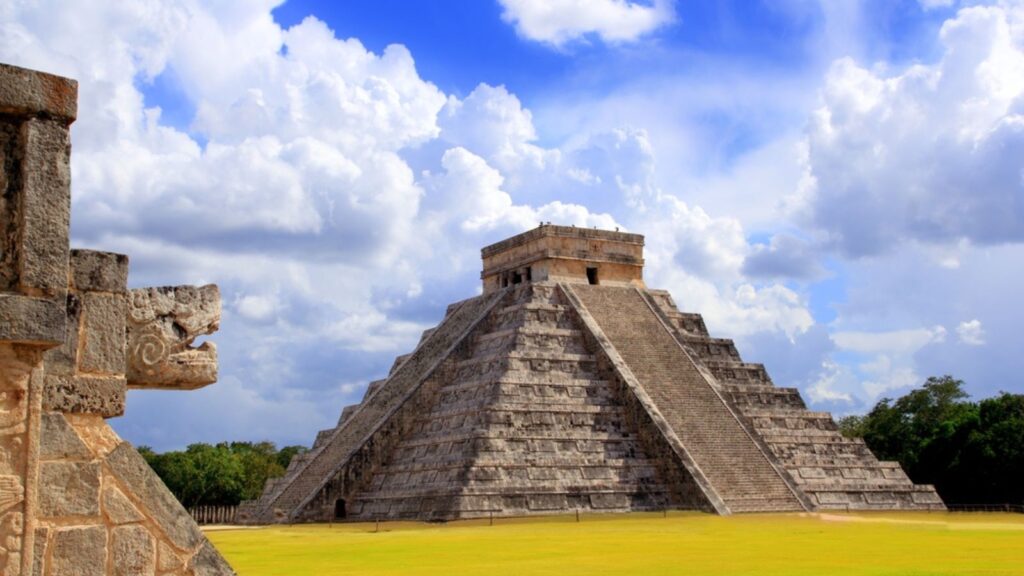
19. Chichen Itza, Mexico
The Maya were sophisticated astronomers, engineers, and architects, and Chichen Itza is a testament to their advanced civilization. El Castillo pyramid dominates the site, but there’s also a ball court, temples, and an observatory. Its grandeur reveals a society that flourished long before European contact.
The Yucatan peninsula’s heat and humidity can be intense. Wear sunscreen, bring plenty of water, and consider an early morning visit to avoid the midday sun.

20. The Berlin Wall Memorial, Germany
Not all history is ancient. The Berlin Wall was a potent symbol of Cold War division, and this memorial preserves remnants, including a guard tower. Exhibits detail daring escape attempts and the heartbreak of a city divided. It’s a stark reminder that some of the most profound historical shifts happened within living memory.
Combine it with Checkpoint Charlie and the Topography of Terror museum for a deeper understanding of Berlin’s difficult 20th-century history and subsequent reunification.
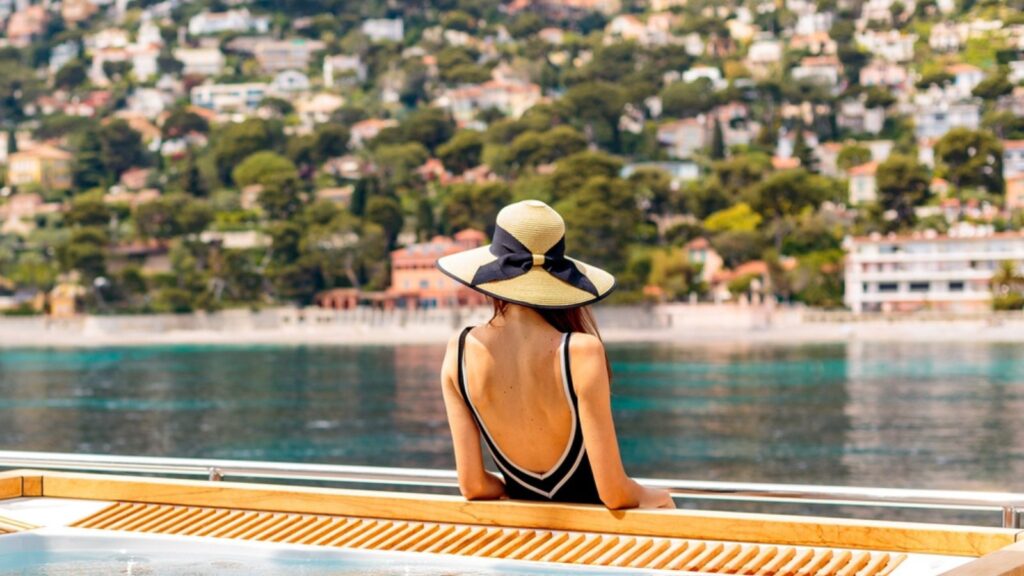
14 Destinations Where You Can Live Like Royalty Under $1000 Per Month
The dream of a comfortable, fulfilling life abroad doesn’t have to be financially unattainable. The world is full of vibrant destinations where you can stretch your budget and experience a high quality of life for a fraction of the cost in many Western countries.

19 Over-Hyped Global Travel Destinations
Travel opens our minds, exposing us to new cultures, cuisines, and breathtaking landscapes. But with countless “must-see” destinations heavily promoted in the media, it’s easy to get swept up in the hype, sometimes leading to disappointing or overpriced experiences.
This list isn’t about bashing any place; it’s about encouraging a discerning mindset. Some of these destinations are beautiful, but it’s essential to manage expectations and be aware of potential pitfalls like crowds, inflated prices, or misrepresentation in that heavily filtered social media feed.
More for You
‘A sleaze merchant’ but very credible witness- former attorney on David Pecker’s hush money testimony
Unsellable Houses' Lyndsay Lamb Says Buyers Are Moving Away From This Color Trend
18 Vintage Boy Names No One Else Is Using Yet
How Does Umbrella Insurance Work and Is It Worth the Cost?
5 Most Powerful Dodge Crate Engines Ever Built (And What They Cost)
Spicy Mango Whipped Goat Cheese Is This Summer's IT Dip
This is the ideal sleep temperature for older adults, new study finds
Zendaya's Baby Pink Tennis Polo Dress Includes Cutouts That Hit Her Hip Bone
Uniqlo’s Zelda: Tears of the Kingdom is next video game collab
Animated VR Anthology ‘Blue Figures' Brings Jazz Greats to Life
What Happens to Your Body When You Eat Peanut Butter Regularly
Baking Soda Makes a Great DIY Weed Killer—Here's How to Use It
The Coolest Car From the Year You Were Born (1945-1995)
Age at which you're officially old has changed
Eagles select Clemson linebacker Jeremiah Trotter Jr.
She helps hoarders clean up, and she has thoughts on your mess
Cuban mercenaries eliminate Russian regiment commander in Donetsk region
18 Foods That Help You Fall and Stay Asleep
California's $20 Minimum Wage Law Results in Nearly 10,000 Fewer Fast-Food Jobs Since Bill Was Signed
Southwest Airlines Is in Trouble

- Entertainment
- Investigations
- Latest Headlines
- Law Office Shooting
- What Are They Hiding?
- 2024 Election
- Clark County
- Nation and World
- Science and Technology
- Road Warrior
- Las Vegas Weather
- East Valley
- North Las Vegas
- Summerlin/Centennial Hills
- Remembering Oct. 1, 2017
- Deborah Wall
- Natalie Burt
- Remembering Jeff German
- Police Accountability
- Alpine Fire
- 100 Years of Growth
- Dangerous Driving
- Raiders News
- Golden Knights
- UNLV Football
- UNLV Basketball
- Nevada Preps
- Sports Betting 101
- Las Vegas Sportsbooks
- National Finals Rodeo
- Where Are They Now?
- On TV/Radio
- MMA and UFC
- Casinos & Gaming
- Conventions
- Inside Gaming
- Entrepreneurs
- Real Estate News
- Business Press
- Sheldon Adelson (1933-2021)
- Debra J. Saunders
- Michael Ramirez cartoons
- Victor Joecks
- Richard A. Epstein
- Victor Davis Hanson
- Drawing Board
- Homicide Tracker
- Faces of Death Row
- Kats’ Cool Hangs
- Arts & Culture
- Home and Garden
- Las Vegas Hiking Guide
- RJ Magazine
- Today’s Obituaries
- Submit an obit
- Dealer News
- Classifieds
- Place a Classified Ad
- Provided Content
- Real Estate Millions
- Internships
- Service Directory
- Transportation
- Merchandise
- Legal Information
- Real Estate Classifieds
- Garage Sales
- Contests and Promotions
- Best of Las Vegas
- Nevada State Bank
- Verizon Business
- P3 Health Partners
- Adult Health
- Star Nursery
- Partner Articles
- Ignite Funding
- Supplements
- Travel Nevada
- Subscriptions
- Newsletters
- Advertise with Us
- >> Business
- >> Tourism
Las Vegas sees big convention decline, visitation up slightly
The number of passengers using Harry Reid International Airport in March was the third highest in the airport’s history, with international travel fueling that growth.
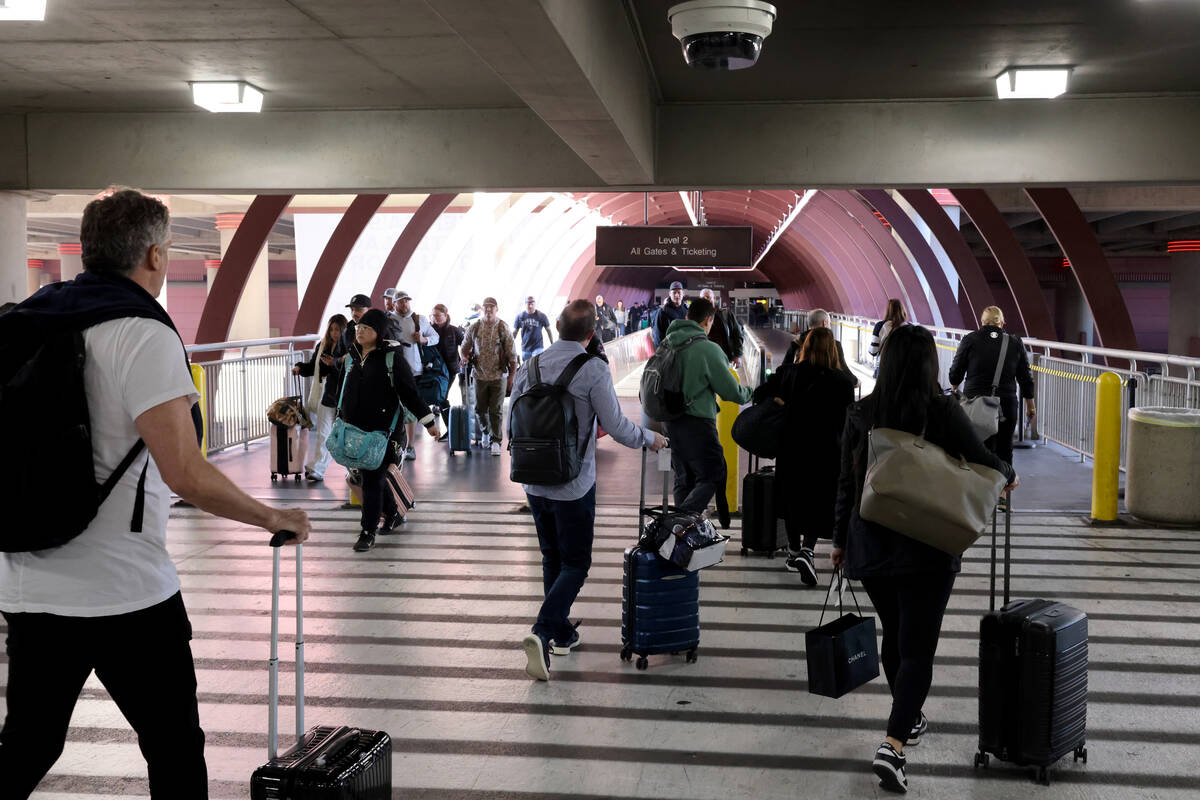
Visitor volume in Las Vegas increased slightly in March despite a huge decline in convention attendance for the month, the Las Vegas Convention and Visitors Authority reported Thursday.
Meanwhile, hotel occupancy and average daily room rates fell despite near-record traffic at Harry Reid International Airport and a slight uptick in vehicle traffic on major highways to Las Vegas.
Visitation was up 0.4 percent to 3.67 million, but convention attendance fell by 37.2 percent compared with a year ago — a statistic more reflective of a tough comparison with March 2023 when the ConExpo-Con/Ag construction equipment trade show was in Las Vegas than a poor showing this year.
Hotel occupancy fell 3 percentage points to 85.3 percent in March and the average daily room rate dropped 16.4 percent to $178.26 a night.
For the first quarter of 2024, visitation is up 4.2 percent from last year to 10.43 million, while convention visitation is off 7.2 percent to 1.8 million for the first three months of the year.
Kevin Bagger, who heads LVCVA research, said the tough comparison against March 2023 included the room occupancy and room rate categories, which posted records a year ago.
RevPAR, or revenue per room, a profitability metric, was also down from a year ago by 19.2 percent to $152.06.
Also Thursday, the Clark County Department of Aviation reported near-record passenger counts at Harry Reid International Airport in March as more than 5 million passengers passed through the airport’s gates for only the third time ever.
In March, 5.043 million passengers arrived or departed from Reid International. The record of 5.47 million was set in October, and there were 5.18 million in October 2022.
A high volume of international traffic contributed to the busy month with 314,577 arrivals and departures — a 22.8 percent increase from March 2023. That’s the second highest post-pandemic total, trailing the 315,147 recorded in October.
Domestically, passenger counts were up 1.3 percent to 4.652 million, with market leader Southwest Airlines recording its second-highest passenger total at the Las Vegas airport. The Dallas-based airline reported 1.948 million passengers, a 14.2 percent increase from a year earlier and just below the 1.966 in October.
Southwest is offering the highest number of flights to and from Las Vegas in its history — 241 a day — and is using larger-capacity planes on many of its routes.
Internationally, Canadian discounter Westjet carried the most passengers to Reid, with 74,839 for the month, followed by Air Canada with 60,246. The top overseas carrier was British Airways, with 20,025 passengers.
Reid passenger numbers were up from a year earlier, despite a 17.3 percent decline in passengers using the westside and helicopter terminal, which reported 76,660 passengers.
For the first quarter of 2024, Reid passenger counts are up 1.7 percent from a year earlier, with 13.7 million. If that level can be maintained, Reid would surpass 2023’s record of 57.6 million passengers.
Contact Richard N. Velotta at [email protected] or 702-477-3893. Follow @RickVelotta on X.


The convergence of Olympic curling triumphs, efforts to bring the Games to Nevada, a Canadian fan base and a nonprofit club layed the groundwork for a new local facility.

The crane was being used in the $600 million Las Vegas Convention Center renovation project at the facility’s North Hall.

The Biden administration issued final rules Wednesday to require airlines to automatically issue cash refunds for things like delayed flights and to better disclose fees for baggage or canceling a reservation.

Brightline West and federal, state and local officials broke ground on the long-discussed high-speed rail system linking Las Vegas and Southern California.

The platform says it’s promoting the rise of “day guesting” – where guests can use a hotel’s amenities like pools, spas and fitness centers without booking a room.

Transportation Secretary Pete Buttigieg is expected to attend the ceremony for the Las Vegas-to-Southern California high-speed train system.

A Las Vegas casino is bringing a Disneyland staple to the skies above downtown. Here’s when it will begin.

Ahead of plans from Clark County to redevelop the Chinatown area local businesses say traffic and parking should be at the top of the list for issues to be addressed.

Plans include a complete renovation of the casino-resort and further development of 35 unused acres behind it.

Value-driven weddings and streamlined services have given the destination its reputation for more than 70 years.


IMAGES
VIDEO
COMMENTS
After World War II, governments became interested in tourism as an invisible import and as a tool of diplomacy, but prior to this time international travel agencies took the lead in easing the complexities of tourist journeys.The most famous of these agencies was Britain's Thomas Cook and Son organization, whose operations spread from Europe and the Middle East across the globe in the late ...
HISTORY Travel TM is created and managed by Academic Travel Abroad. Academic Travel Abroad is an educational travel provider for some of this country's most prestigious organizations. Riding the post-war wave of interest in travel to Europe, ATA launched operations in 1950 by assisting universities and cultural institutions in the creation of ...
Tourism and the history of travel Emily Thomas, The Meaning of Travel (New York: Oxford University Press, 2020); Xiaolin Duan, The Rise of West Lake: A Cultural Landmark in the Song Dynasty (Seattle: University of Washington Press, 2020); Bertram Gordon, War Tourism: Second World War France from Defeat and Occupation to the Creation of Heritage (Ithaca: Cornell University Press, 2018); Mia Bay ...
Tourists at the Temple of Apollo, Delphi, Greece. Tourism is travel for pleasure, and the commercial activity of providing and supporting such travel. UN Tourism defines tourism more generally, in terms which go "beyond the common perception of tourism as being limited to holiday activity only", as people "travelling to and staying in places outside their usual environment for not more than ...
Eric G. E. Zuelow is Professor of History at the University of New England in Biddeford, Maine. He is author of A History of Modern Tourism (2015) and Making Ireland Irish: Tourism and National Identity since the Irish Civil War (2009), editor of Touring Beyond the Nation: A Transnational Approach to European Tourism History (2011), and editor of the Journal of Tourism History.
Today, trips like these are often within reach of the average American family. But that's a relatively new development. In a paper for The Journal of Economic History, Thomas Weiss explains how tourism went from an uncommon pastime for elites to a thoroughly middle-class activity. Weiss writes that, in general, the first European settlers in ...
History. 2000 - 2010 | 1999 - 1975 | 1970 - 1946. 2010. First T.20 Ministers' Meeting underscores tourism's contribution to global economic recovery and the long-term 'green' transformation. 2009. In response to the global economic crisis, the UNWTO Roadmap for Recovery is developed, demonstrating how tourism can contribute to economic ...
What presently is called modern history writing was established during the 1800s. This raises a question about the timing of the publication of the first scholarly studies on the history of tourism or travel.By the late nineteenth century, a number of minor studies had already been published about pilgrimages as well as about travel literature in the West.
Welcome to the first issue of the Journal of Tourism History, published by Taylor and Francis.The International Commission for the History of Travel and Tourism, set under way at the Preston tourism history conferences of 2001 and 2003, is delighted to have this opportunity to pull together the history of tourism on a firm academic footing.
The Journal of Tourism History is the primary venue for peer-reviewed scholarship covering all aspects of the evolution of tourism from earliest times to today's world. Articles address all regions of the globe and often adopt interdisciplinary approaches for exploring the past. The Journal of Tourism History is particularly (though not exclusively) interested in promoting the study of areas ...
Tourism has massively increased in recent decades. Aviation has opened up travel from domestic to international. Before the COVID-19 pandemic, the number of international visits had more than doubled since 2000. Tourism can be important for both the travelers and the people in the countries they visit. For visitors, traveling can increase their ...
Abstract. The aim of the present book is to provide an overview of tourism evolution in the past, present and future. This book discusses significant travel, tourism and hospitality events while ...
The view of tourism's past for Greece is dominated by narratives of early travelers who recorded their experiences punctuated by reference to Greek archaeological treasures, the natural history and the population, and portrayed Greece as a place of difference. Based on these accounts, this study undertakes a typological approach as a crucial ...
1900s. The 1900s was all about that horse-and-carriage travel life. Horse-drawn carriages were the most popular mode of transport, as it was before cars came onto the scene. In fact, roadways were ...
However, when in the 1840s, an extensive network of railways was built, people started to travel for fun. Mid-19th century definitely marks a real beginning of modern tourism. It's the time when the middle class started to grow. And they have found a way to travel easily around Europe. It's coming by no surprise that the first travel agency ...
The tourism market is so large that it has split into an astounding number of niche markets, including ecotourism, backpacking, and historical tourism. As of the writing of this article, there have even been a handful of trips into orbit around Earth branded as "space tourism", a new and exciting chapter in the history of travel and tourism.
In 1854, the first travel agency opened. In 1869, one of the first group tours was launched. It included attendance at the opening of the Suez Canal in Egypt. From 1889, people took holiday cruises on steamships with musical performances. Seaside holidays became really popular around 1900 (and continue to be popular to this today).
Thomas Cook, an English businessman, inspired those without tourism experience to take a leap and go on an adventure. Later, paid work leave established for many in the 20th century ensured that more families could take the time to travel. It was the biggest increase in tourism since the Grand Tour Era.
Greece. 11 Days, 10 Nights. From $6,595. Max 25 Travelers. Trace 5,000 years of Greek history while exploring the country's well-preserved archaeological treasures. Explore the iconic ruins of Athens, and then travel west across the Corinth Canal to visit the beehive tombs and the Palace of Agamemnon in Mycenae and the historic stadium at ...
National Geographic's latest travel stories about Moscow. Boasting a history that spans eight centuries, Russia's capital has evolved into an expansive megapolis which resembles a city-state.
3. Marvel at St. Basil's Cathedral. St. Basil's Cathedral is one of the most iconic churches in the world, and it was the single thing we were most excited to see while in Moscow. Built almost 500 years ago, St. Basil's Cathedral is recognized by its colorful domes and whimsical style.
Here you'll find everything you need to plan a trip to Russia's fascinating capital, from help booking hotels and airport transfers to detailed descriptions of the city's sights and cultural attractions. Whether you're coming to Moscow as a tourist or on business, we're confident you'll find our range of services indispensable.
5. Gorky Park. Moscow's premier green space, Gorky Park (Park Gor'kogo) is the city's biggest and most famous park. There is entertainment on offer here for every taste, from outdoor dancing sessions to yoga classes, volleyball, ping-pong, rollerblading, and bike and boat rental in summer.
For history buffs, travel becomes a pilgrimage, with each landmark a thrilling chapter brought to life. Whether you're fascinated by ancient empires, battlefield bravery, or groundbreaking ...
Last year, Nepal welcomed more than 1 million tourists - for only the third time in the country's history - and data for March showed a nearly 30 per cent year-on-year increase in visitor ...
Tourism Visitation up slightly in March despite big convention decline The number of passengers using Harry Reid International Airport in March was the third highest in the airport's history ...